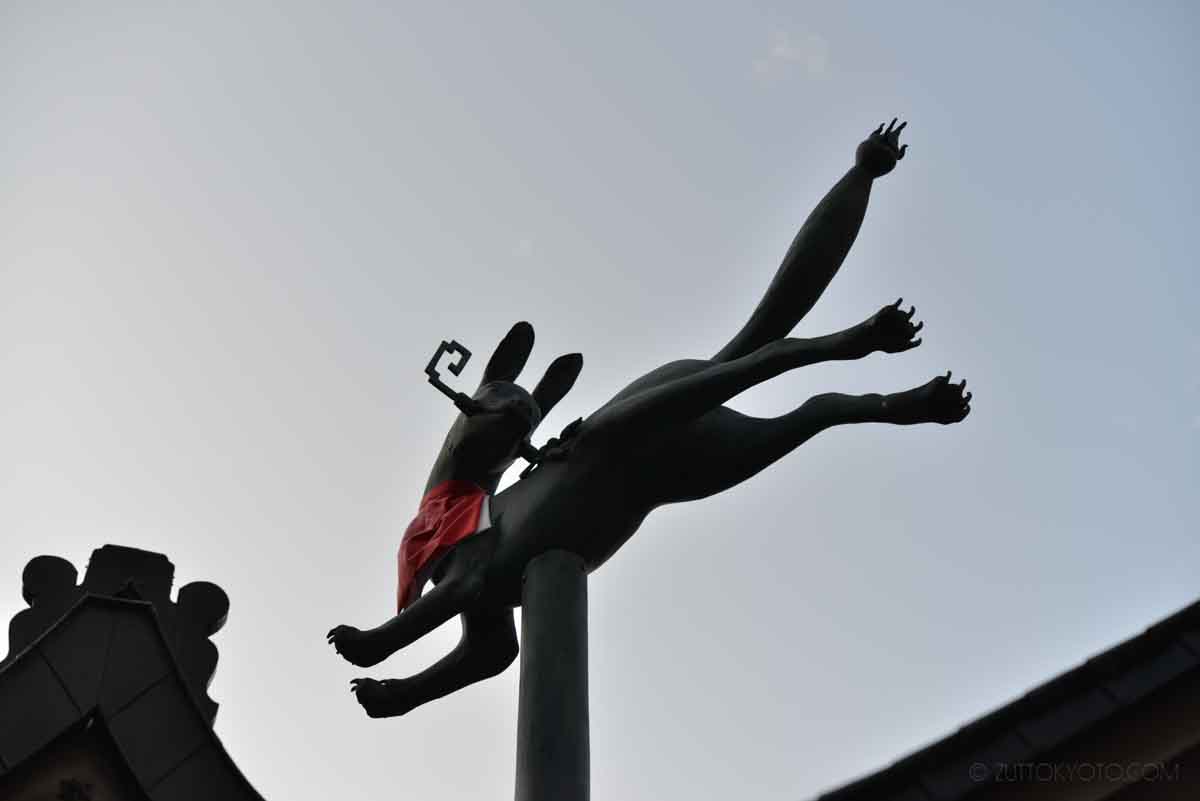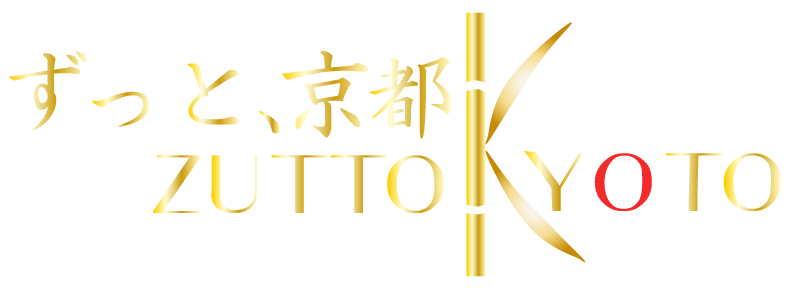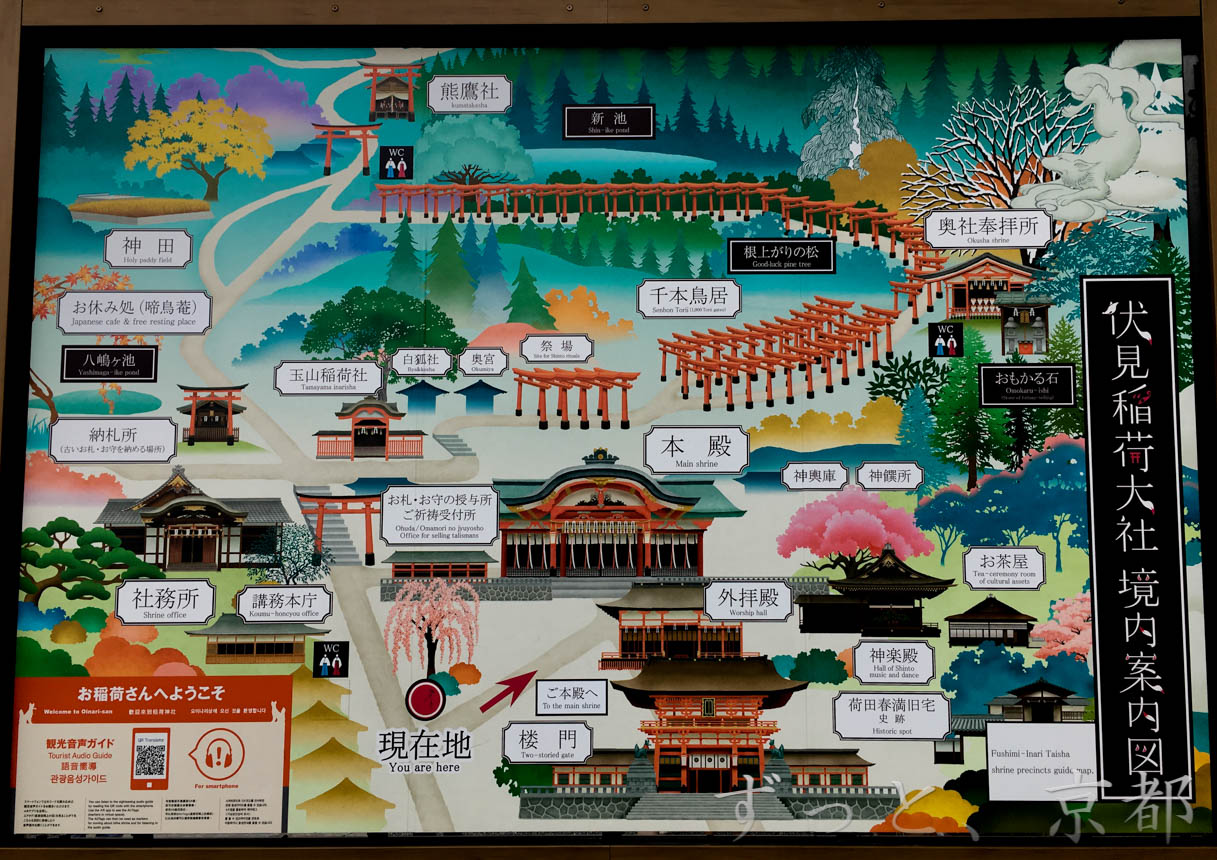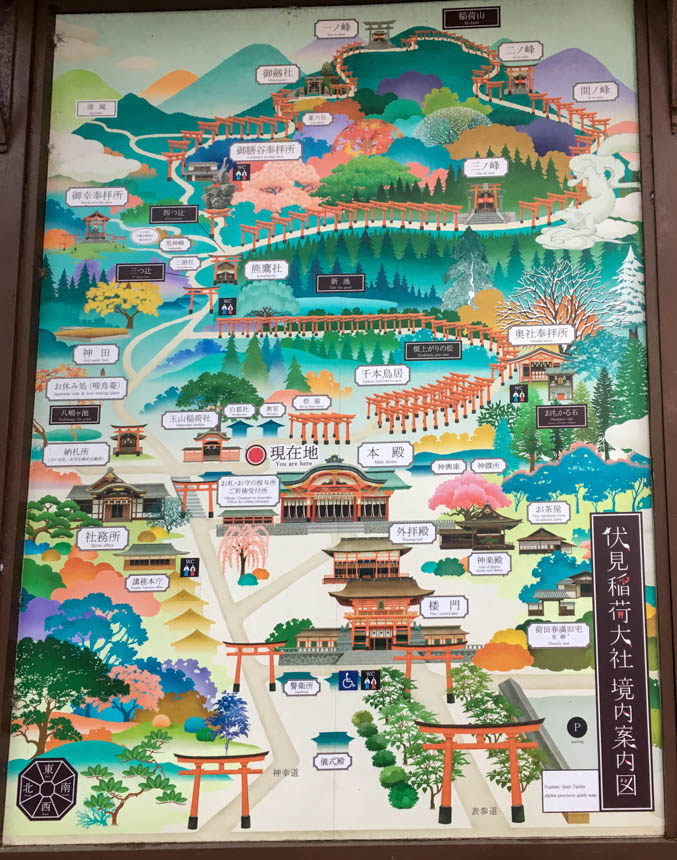Tourist Route
Fushimi Inari Taisha Course
It is a course of Fushimi Inari Taisha in Rakunan area of Kyoto. Fushimi Inari Shrine is
one of the most popular tourist spots in Japan, chosen by TripAdvisor foreigners.
I think there are many people who already know it from the image of red torii.
Here’s how to get to Fushimi Inari Taisha.
If you go from Kyoto station, I recommend you to go by JR without changing trains.
Also, if you have time, you can get off at Tofukuji Station,
which is the first station from JR Kyoto Station, and go to Fushimi Inari Taisha after doing Tofukuji Temple sightseeing.
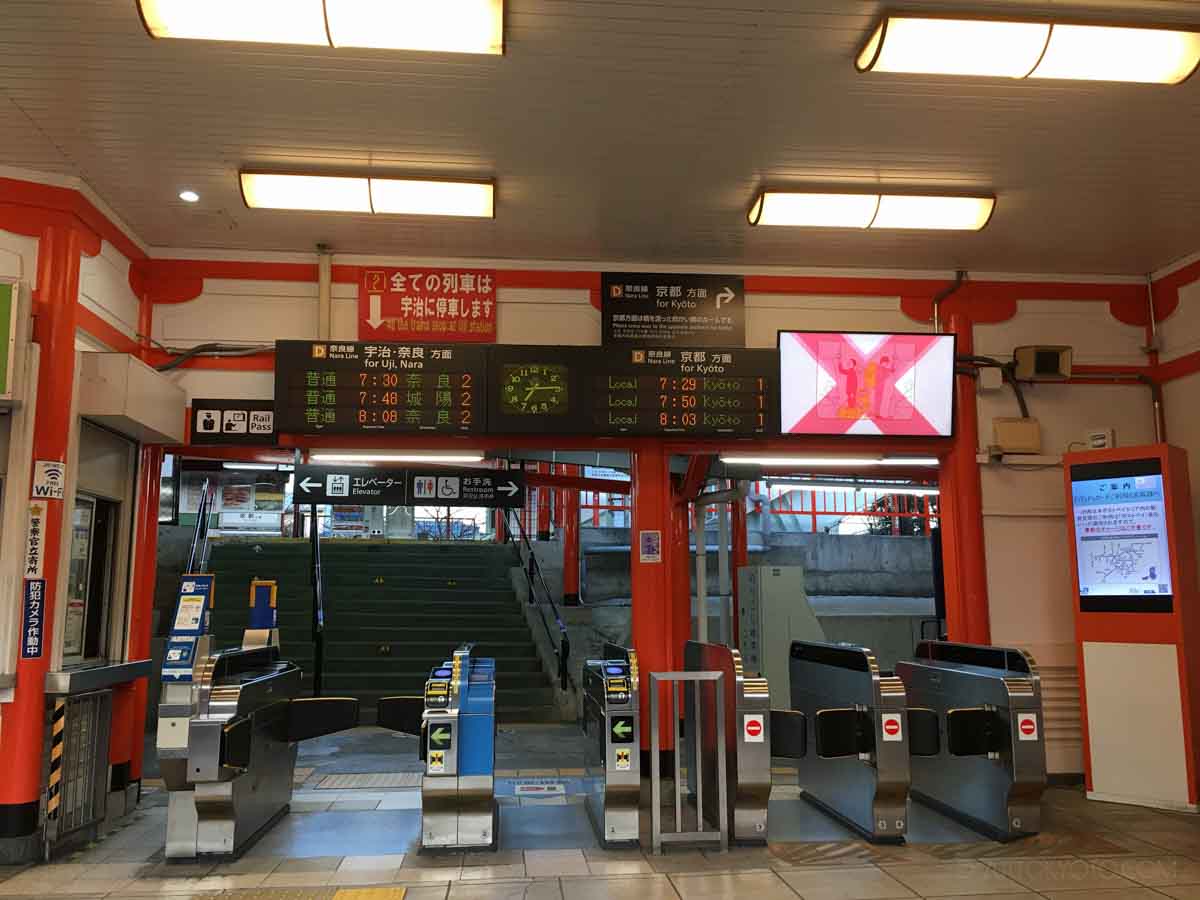
[How to get there only by JR Train]
From JR “Kyoto Station” take the Nara Line or Joyo Line.
Get off at “Inari Station”
[How to get there by taking JR trains and Keihan trains.]
From JR “Kyoto Station” take Nara Line /Nara or Joyo ↓
Get off at JR “Tofukuji Station” and transfer to Keihan Electric Railway.
Keihan Electric Railway “Tofukuji Station” takes it local or semi-express train bound for Yodoyabashi Station,
get off at “Fushimi Inari Station”.↓
The back approach can be found by taking the Keihan Electric Railway “Fushimi Inari Station”.
It takes about 5 to 7 minutes to reach the main shrine.
It is the platform of Keihan Line bound for Yodoyabashi. This station also has the image of a torii.
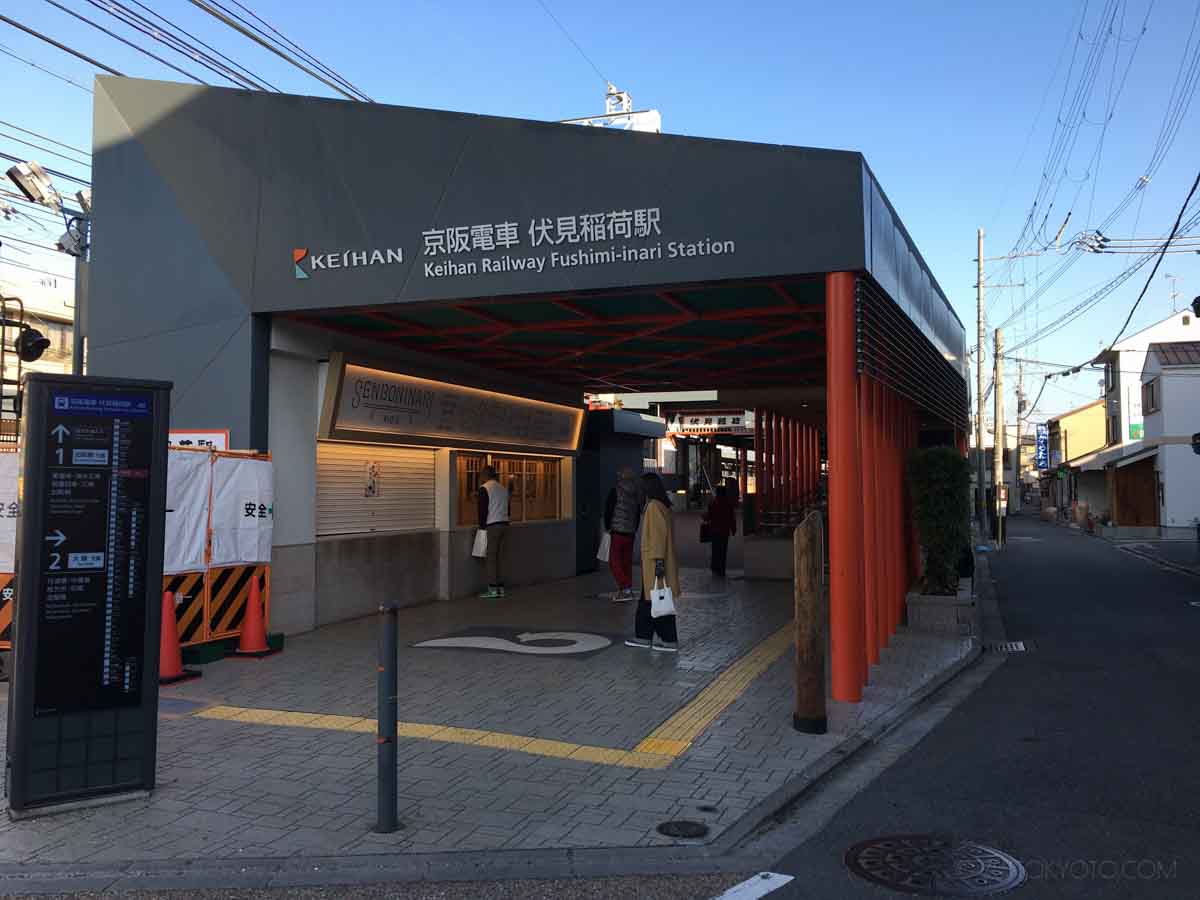
This is Omotesando, which is located across from JR Inari Station.
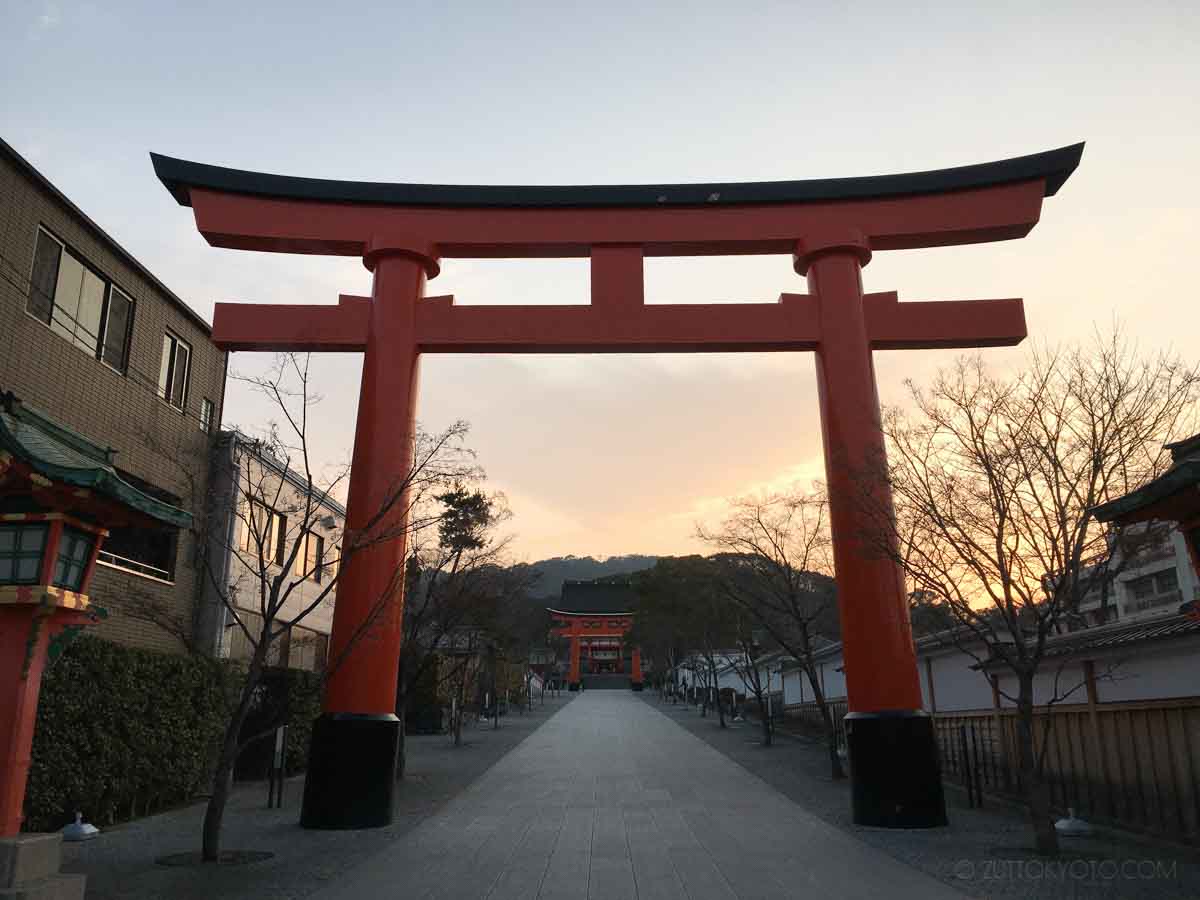
The first torii gate greets you at Omotesando.
If you go along the approach, there is another red torii and the second torii, and the tower gate is at the end of it.
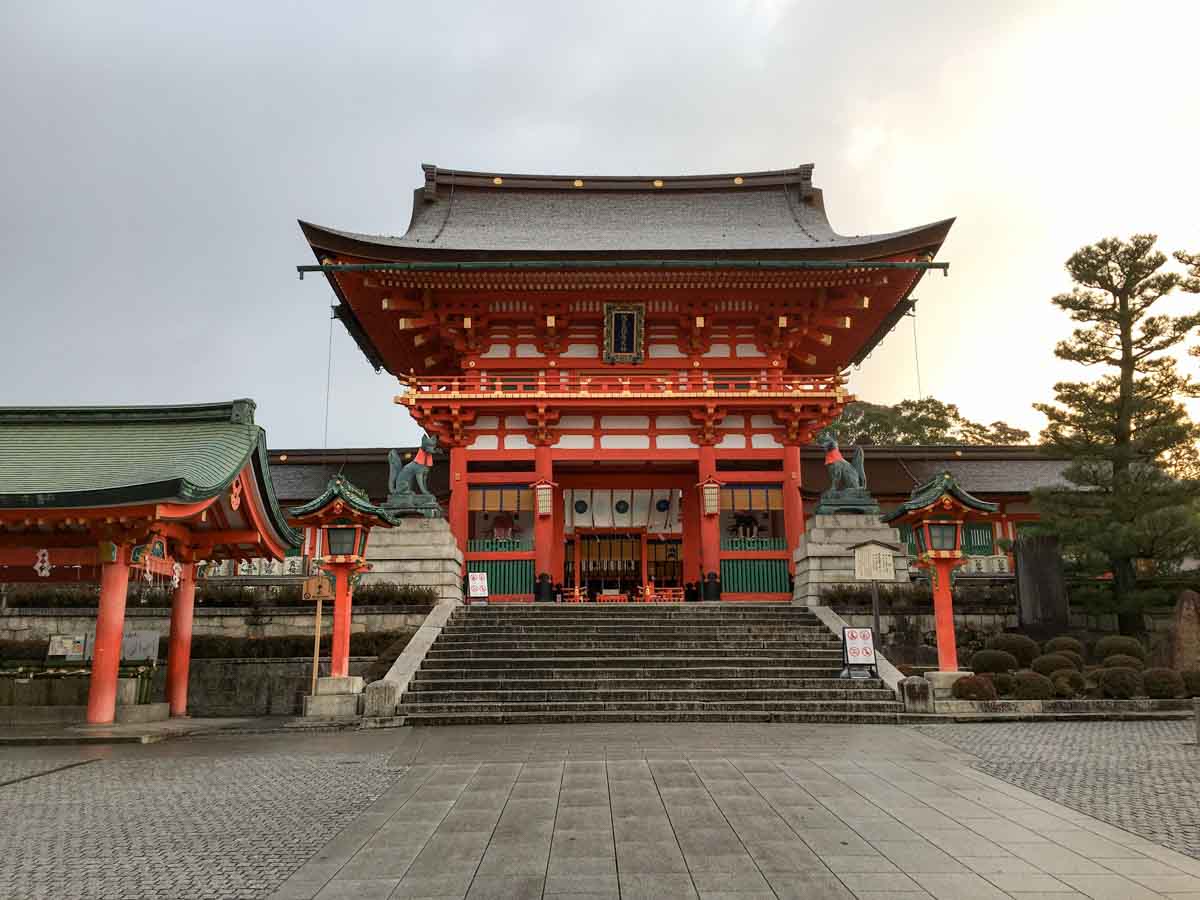
As it is early in the morning on this day, it is very vacant, but after 8 AM, it gets crowded gradually,
and there is a big traffic jam at the torii gate.
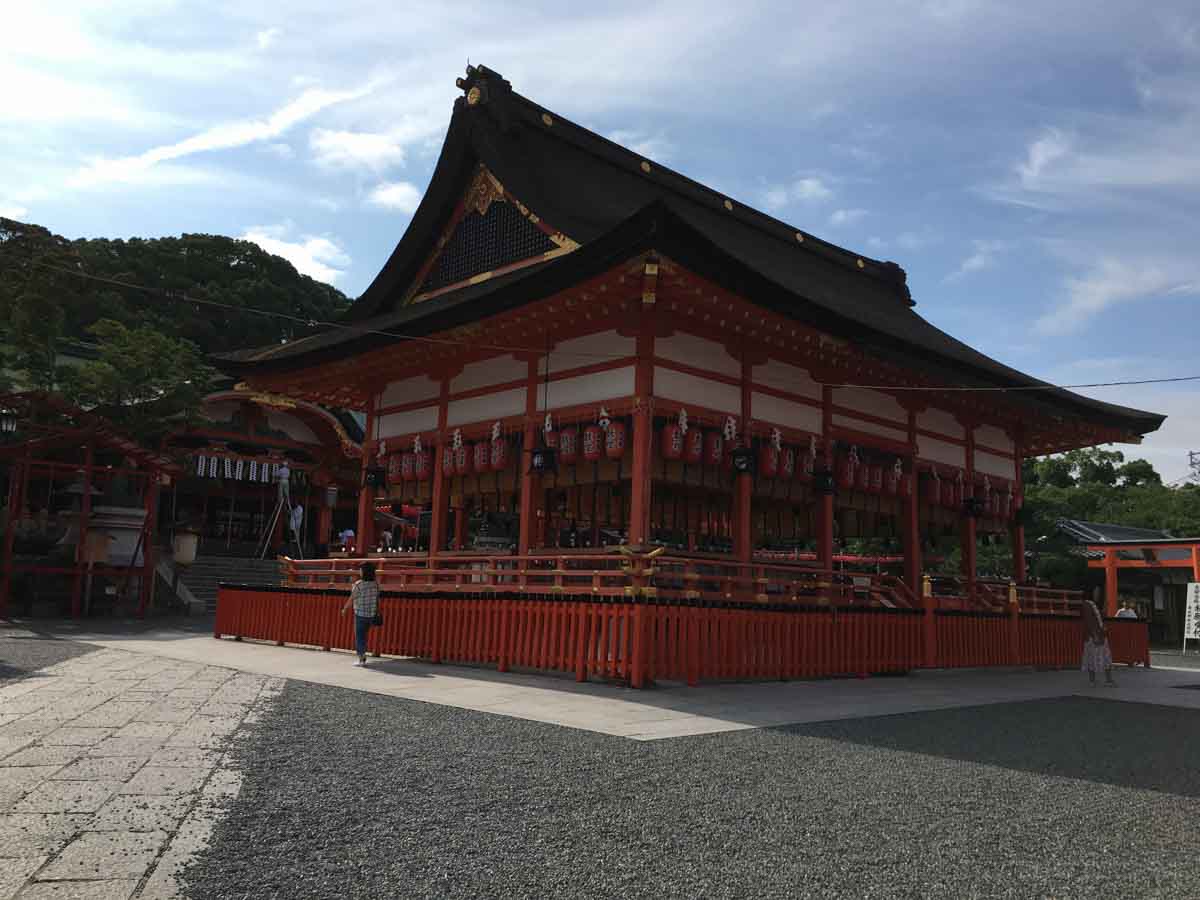
It is said that the origin of Fushimi Inari Taisha Shrine was in 711 AD,
when Hata no Irogu (秦伊呂具) enshrined three pillars in three domestic peaks of Mt. Fushimi.
It is said that when HATA no Irogu hit an arrow at a target of a rice cake,
the rice cake turned into a white bird and flew to a mountain, where rice plants grew, so the shrine was named Inari.
It is the head shrine of the approximately 30,000 Inari-jinja Shrines (稲荷神社) across the country.
Passing through the tower gate, you will find the outer worship hall on the lower right and the main hall at the back of the hall.
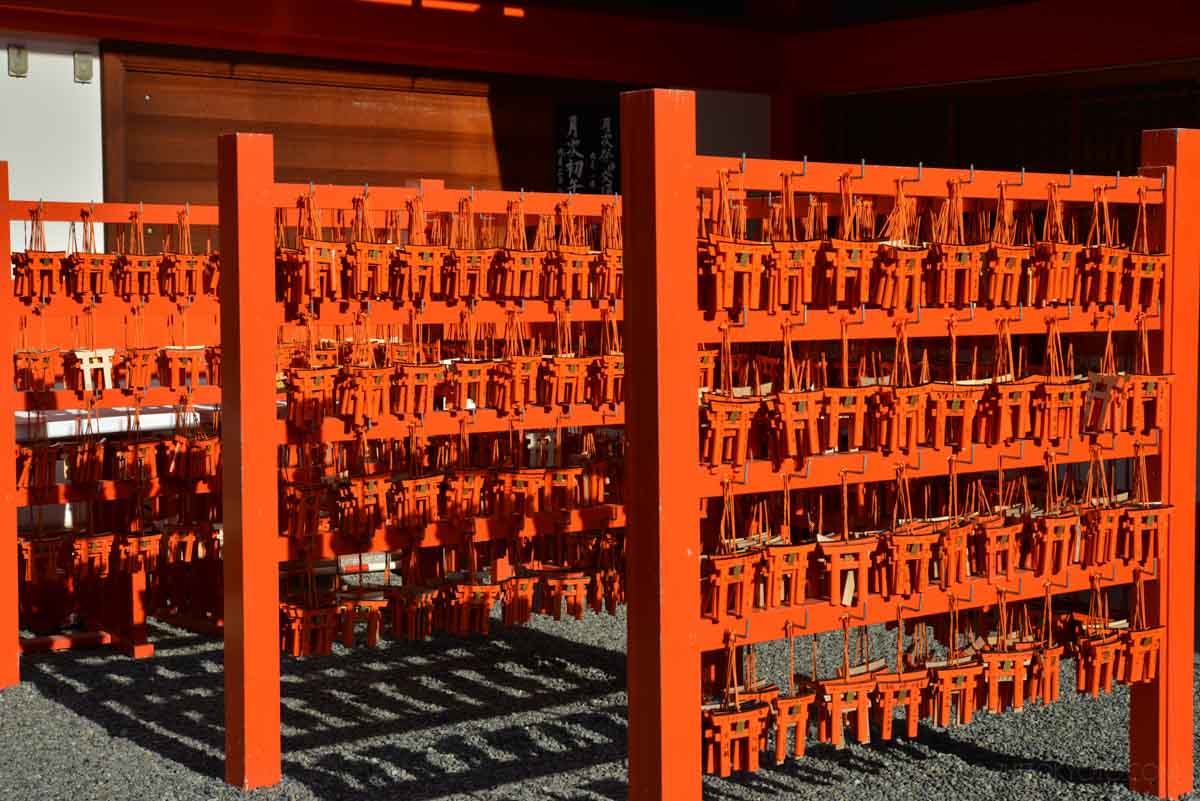
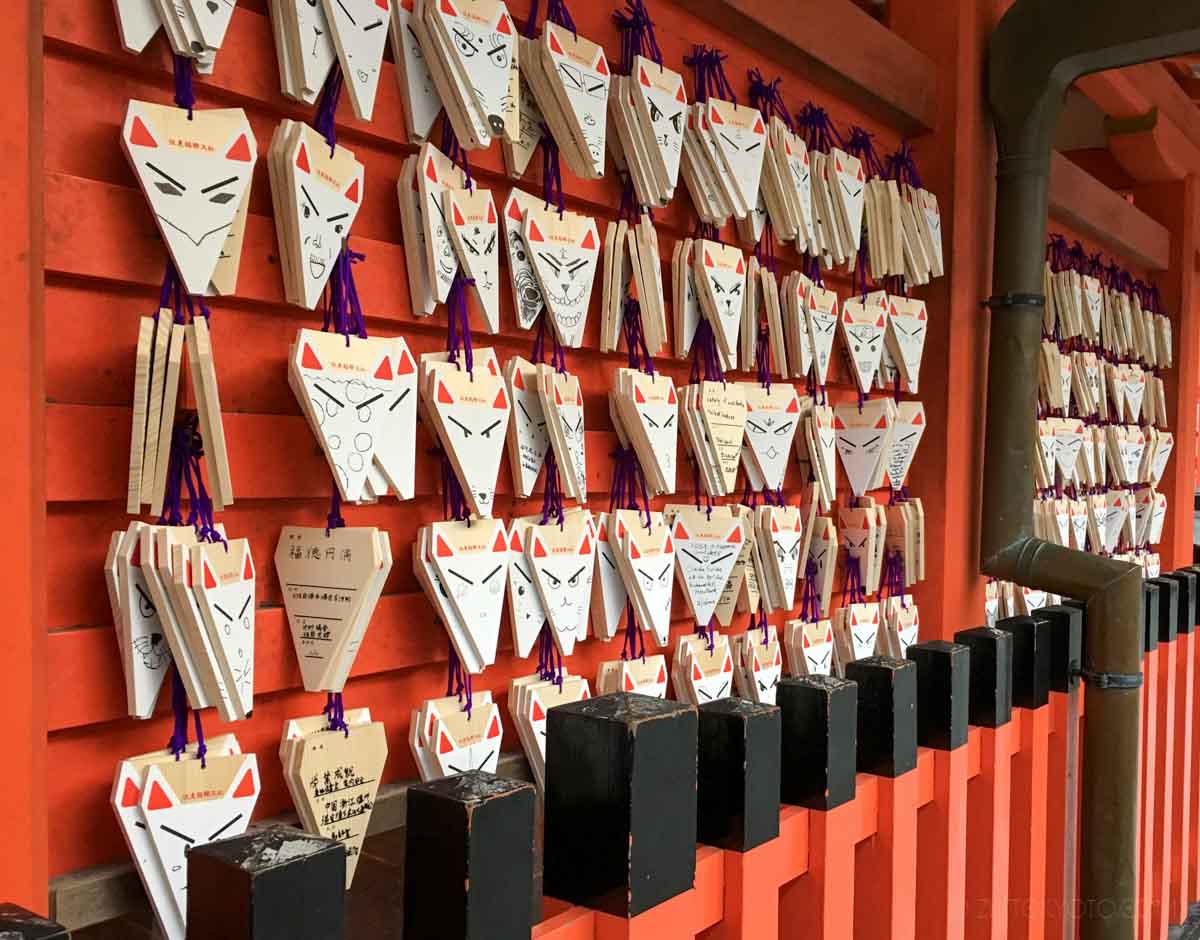
This is the inner worship hall (main hall), which was restored in 1499. The picture below shows the New Year’s visit on January 1.
There are so many people who visit here early in the morning, but there are
so many people from all over the country who come to pay their respects on New Year’s Day.
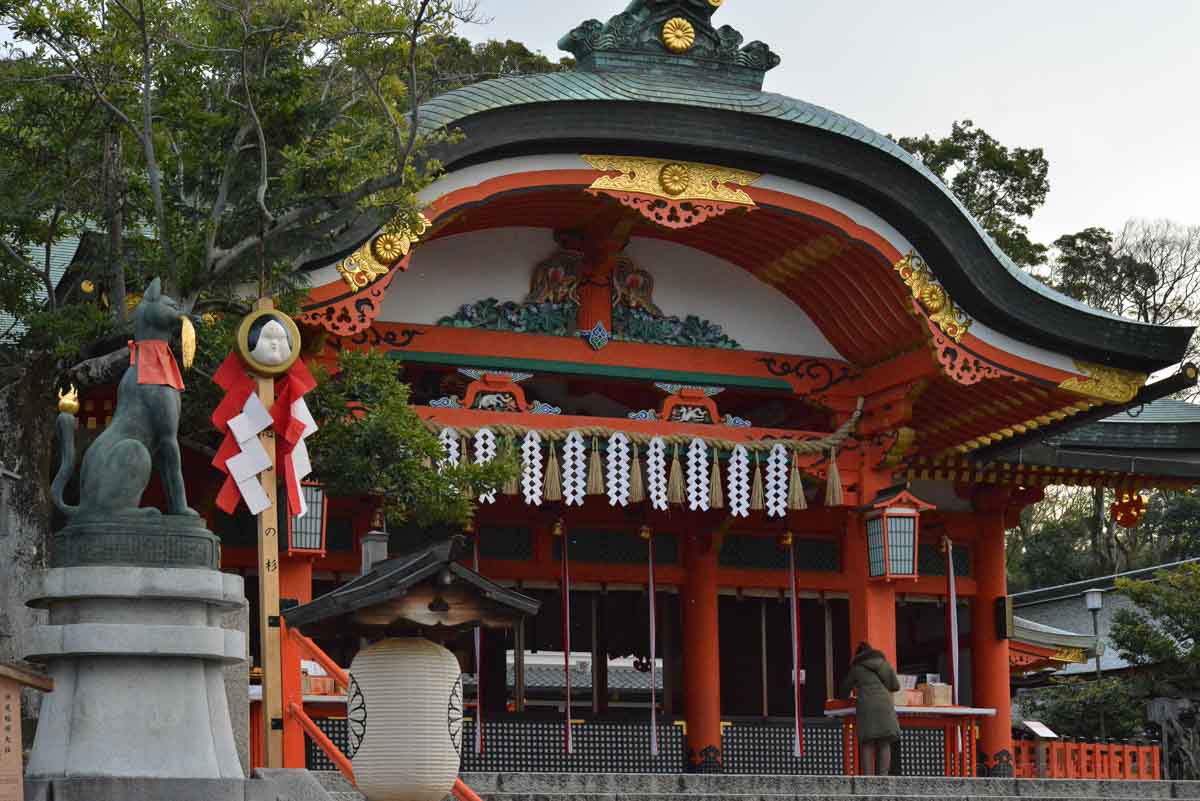
So, let’s go on a tour of the mountains!
The errand boy at Fushimi Inari is a fox, so a fox greets you.
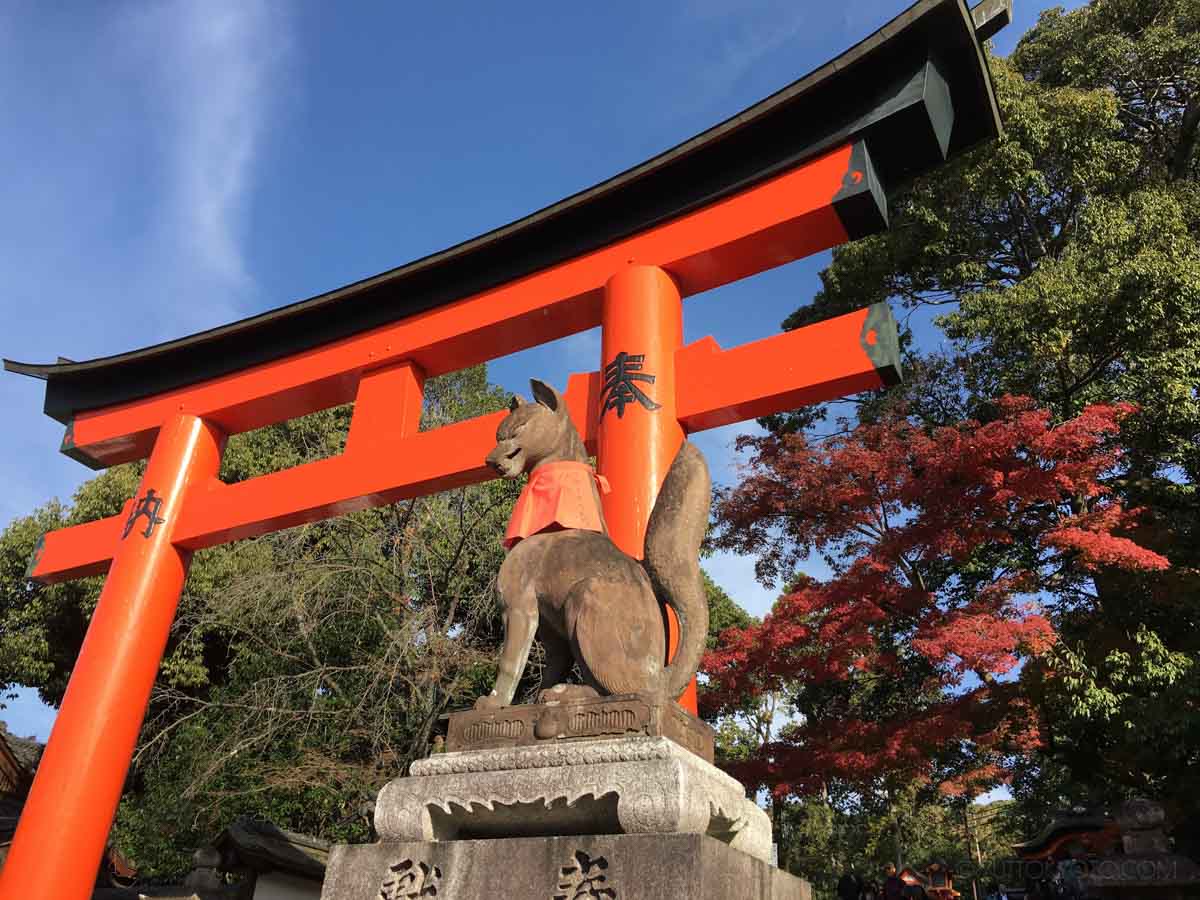
The benefits of Fushimi Inari shrine are believed to be the guardian gods of good harvest and prosperity.
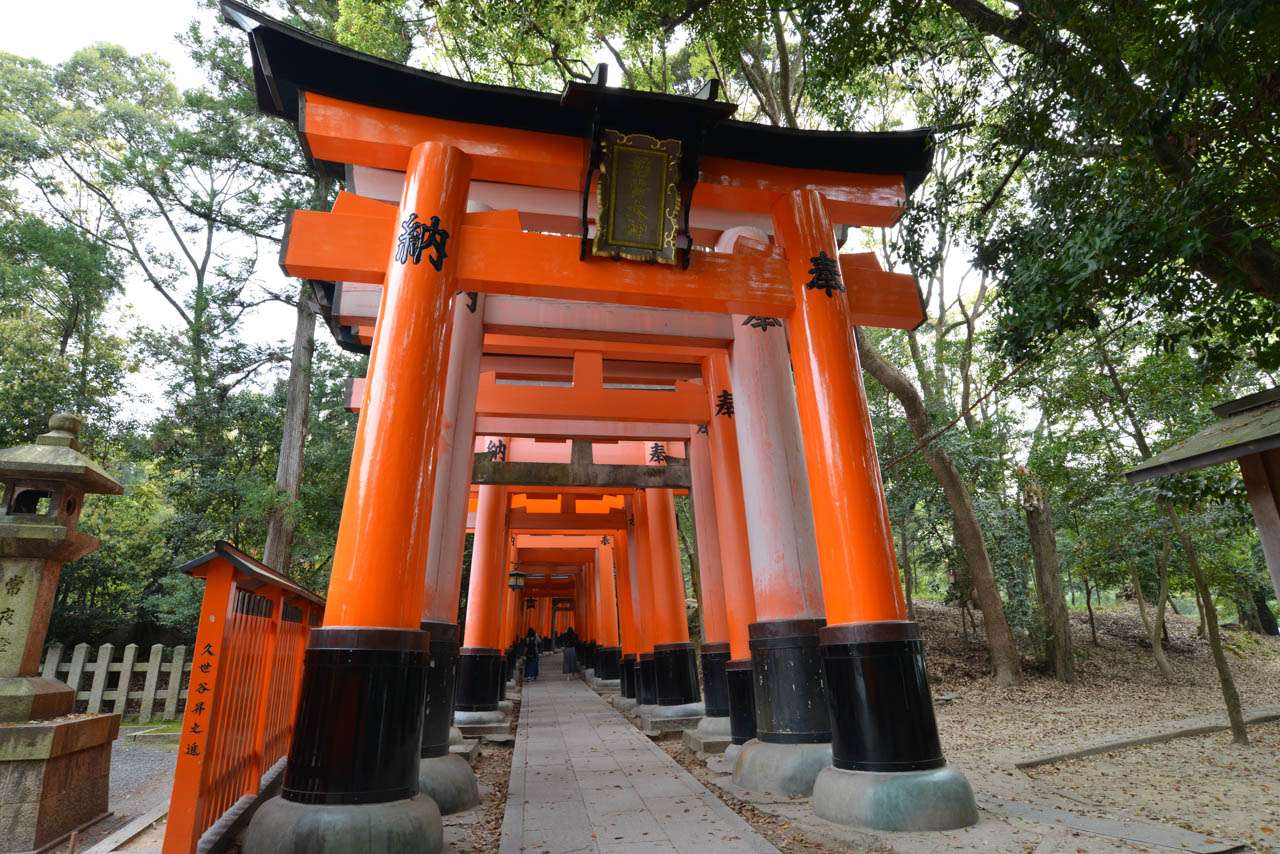
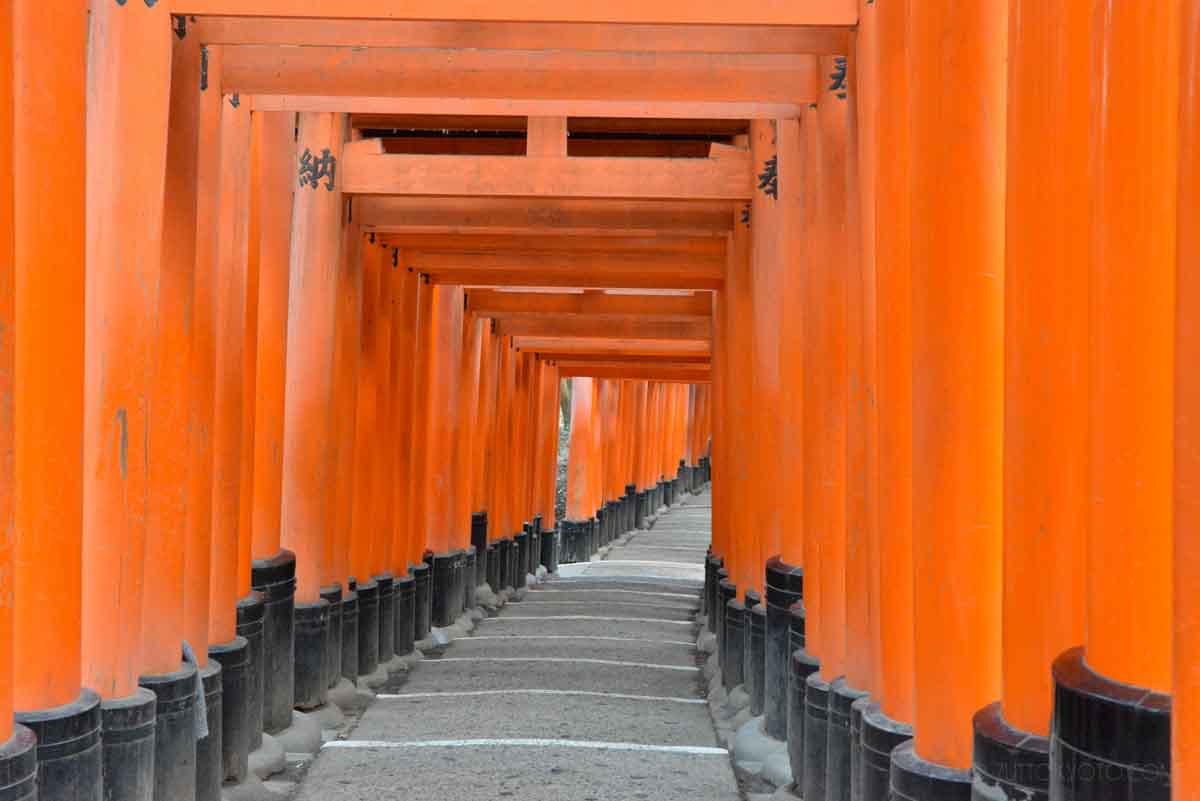
The vermilion-colored torii is called the senbon-torii, or senbon-torii.
The Senbon-torii was a dedication, with the smallest size 5 costing 210,000 yen and
the largest size 16 costing 1.6 million yen. On the reverse side of the dedicated torii gate,
the names of companies and individuals are written on it, so on the way home you can see the names engraved on the gate.
Some of the torii are quite old. Fushimi Inari Shrine is open to visitors 24 hours a day, so you can come at night.
The torii gate is lit up, but it’s a little scary in the dark because it’s in the mountains.
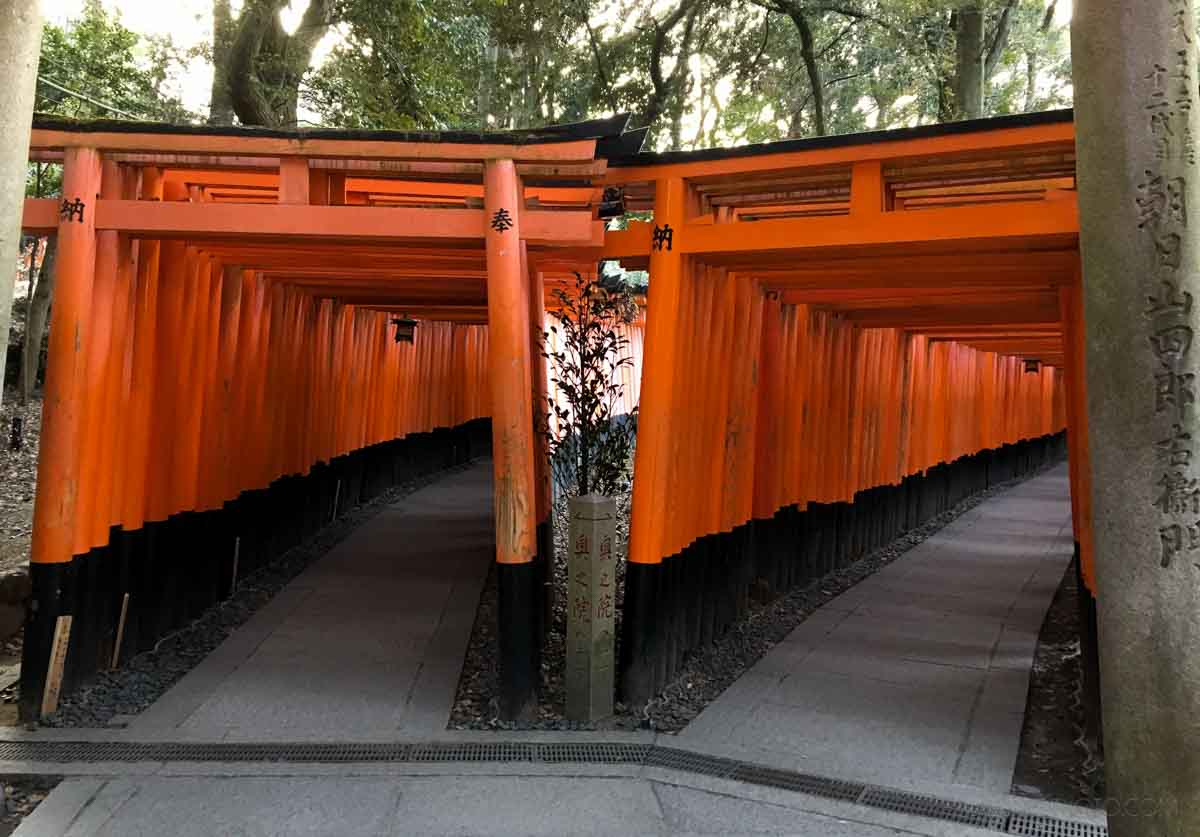
It’s difficult to take a picture of the scenery below if it’s crowded, but if it’s early in the morning,
you can get a good shot at a shutter chance because there aren’t many people around!
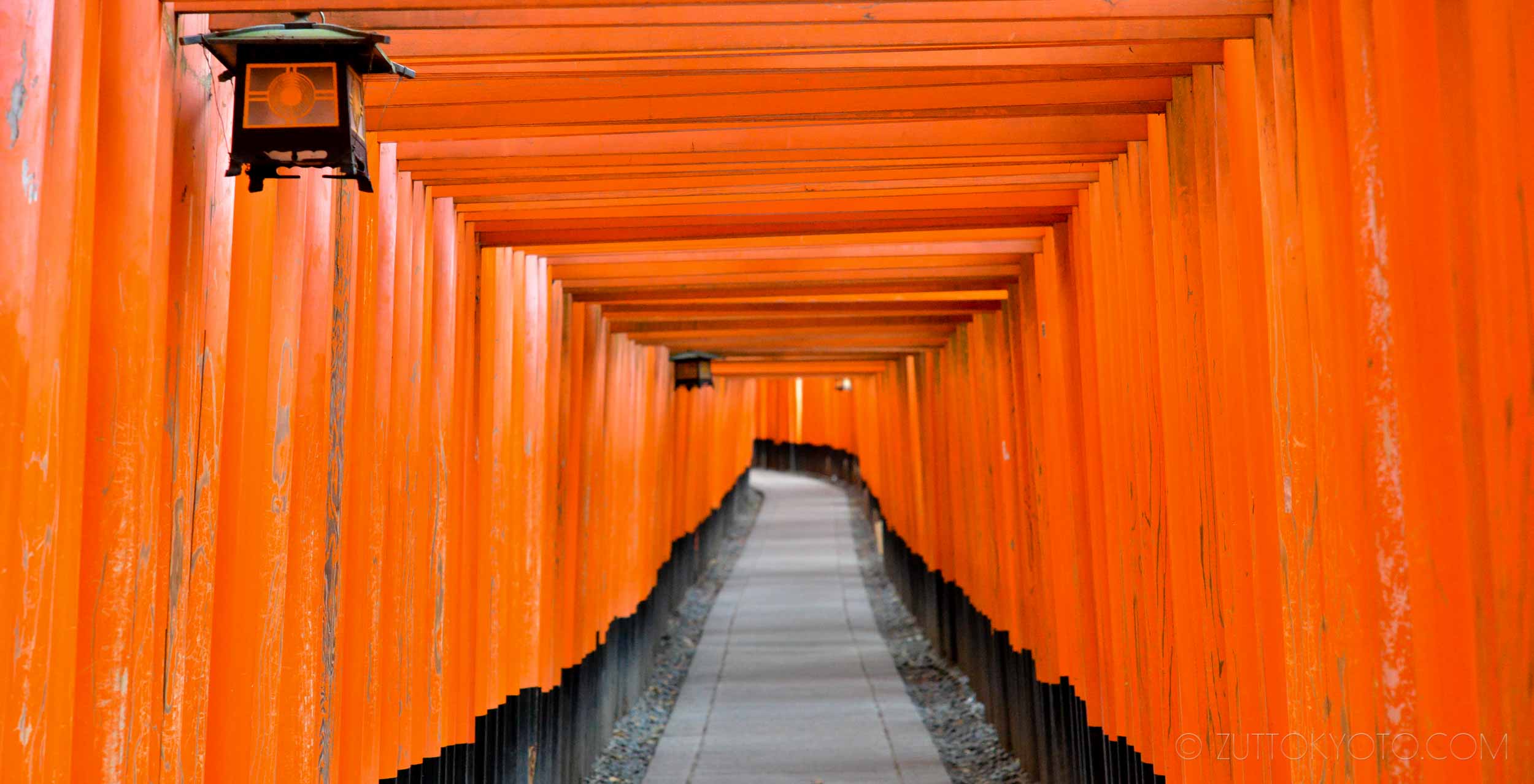
Fushimi Inari shrine’s senbon-torii gate was one of the filming locations in the 2005 Hollywood movie “SAYURI,”
so many people overseas may know about it. If you advance a little further, there is a stone called “Omokaru Ishi”.
There is a round stone on top of a lantern, and it is said that if you hold the stone and it is lighter than you imagine,
your wish will come true, and if it is heavier than you imagine, your wish will not come true.
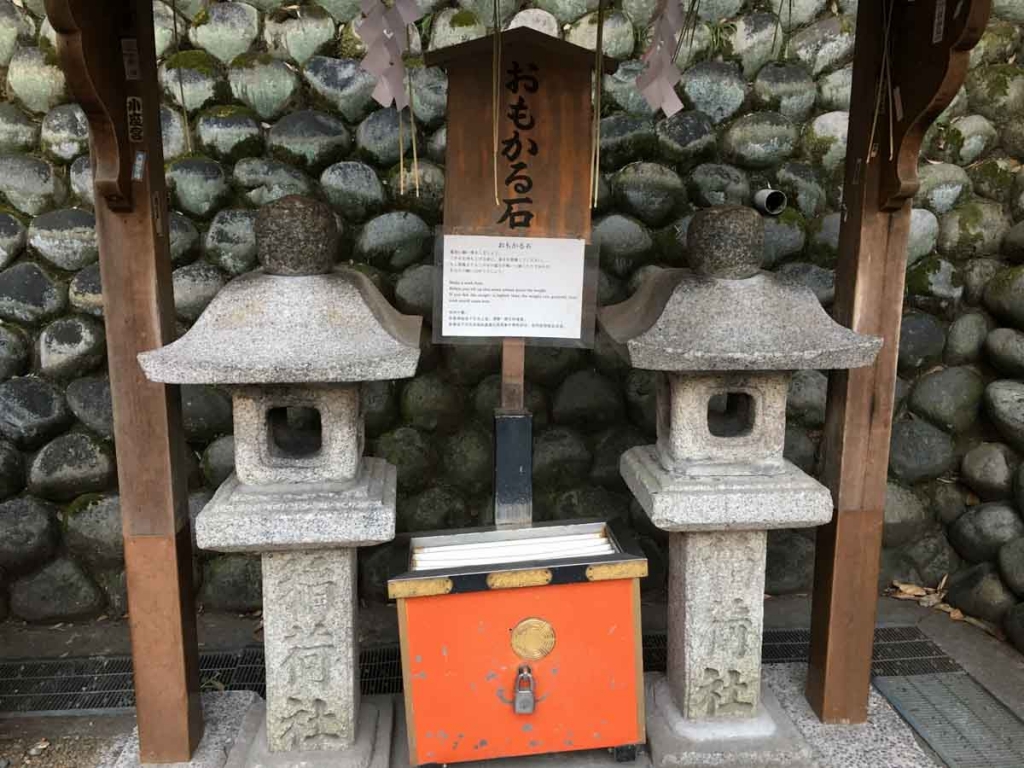
I lifted it right away, but…well, it felt heavy as I imagined it would be…sweat…I’ll try again next time!
Would you like to try it?
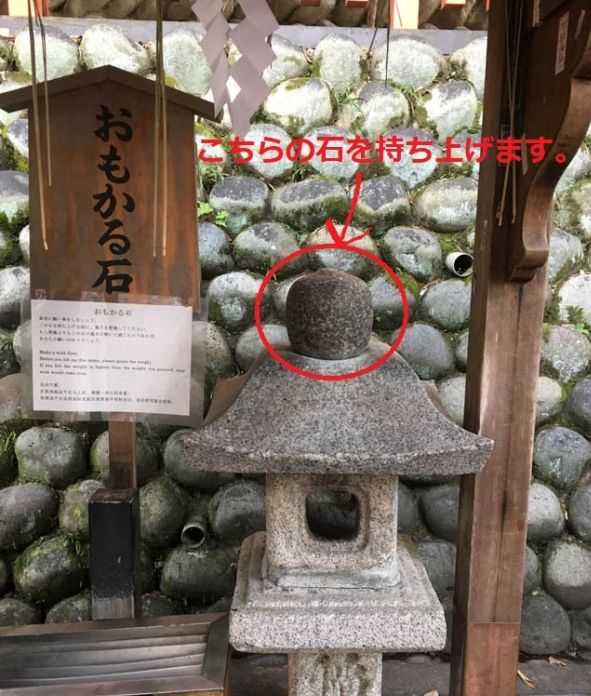
If you go a little further, you will find a path from the route of the torii,
and if you take a look for a while, you will find a path in the bamboo forest called “Takenoshita Michi”(Bamboo Road).
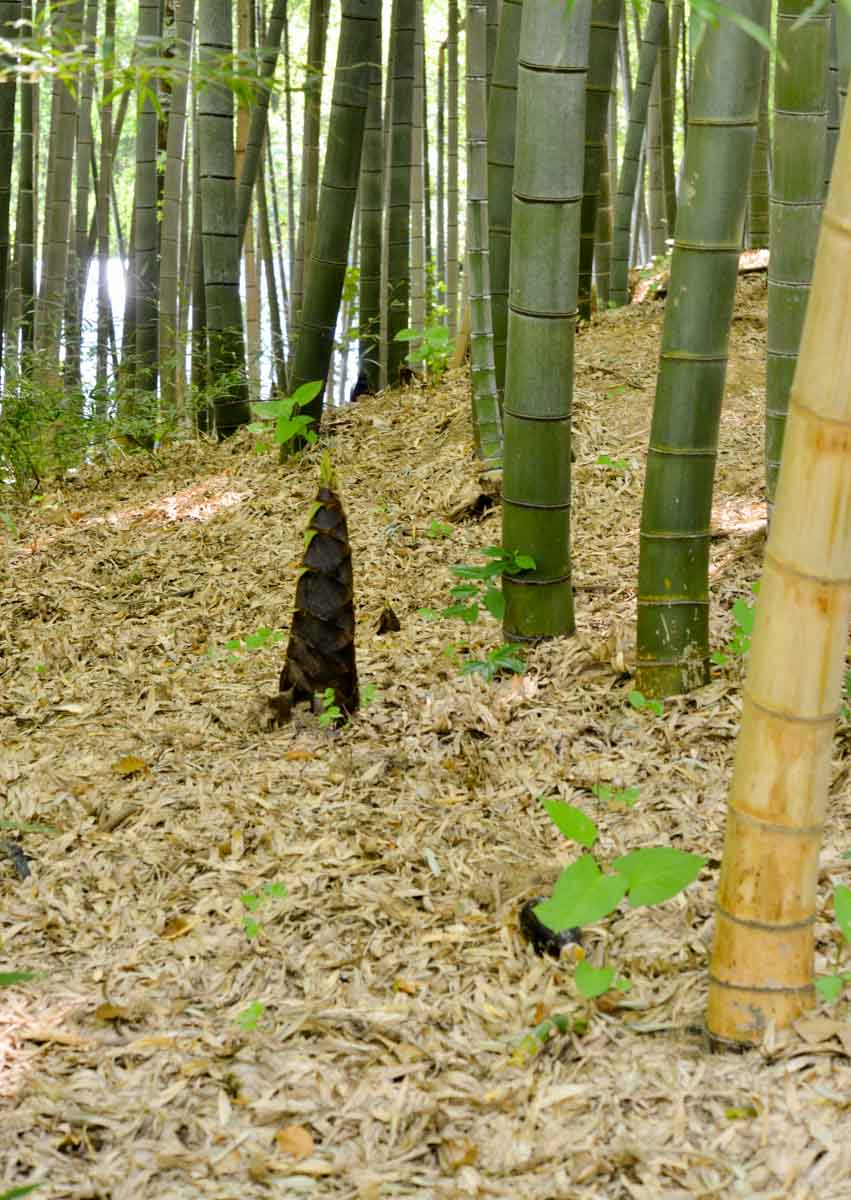
It seems to lead to the Keihan Fujimori Station area when you walk through the bamboo forest.
This time, I will not go further and return to the torii route.
By the way, there aren’t many restrooms at Inariyama, so please check the
location of the restrooms on the map of the temple grounds. This is the map. Click on it to enlarge it.
It’s a lot of stairs, so it takes a lot of energy on a hot day. Those who are used to exercising on a regular basis should be fine,
but I was quite tired at first because I wasn’t used to climbing the stairs. So please try not to overdo it.
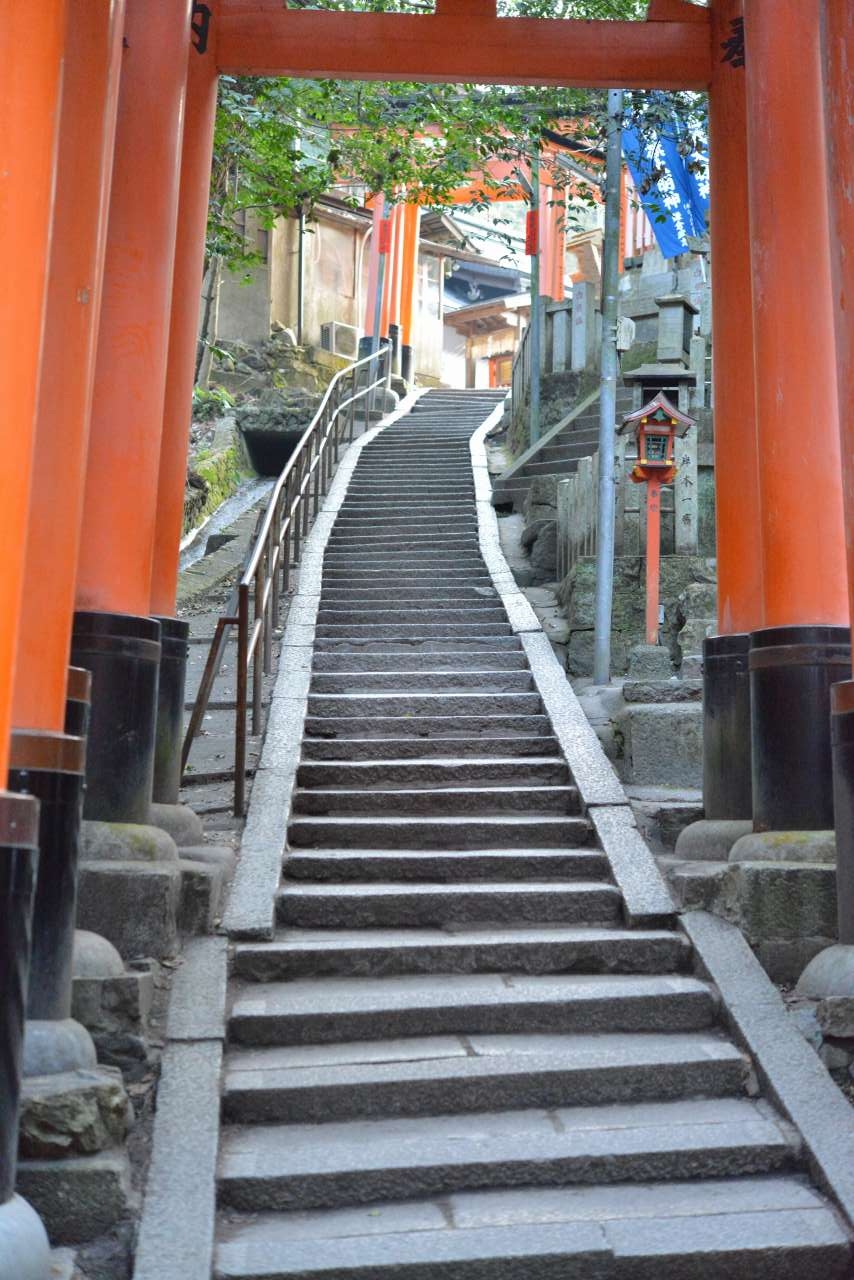
The pond behind the Kumataka Shrine and the pond behind it is called New Pond.
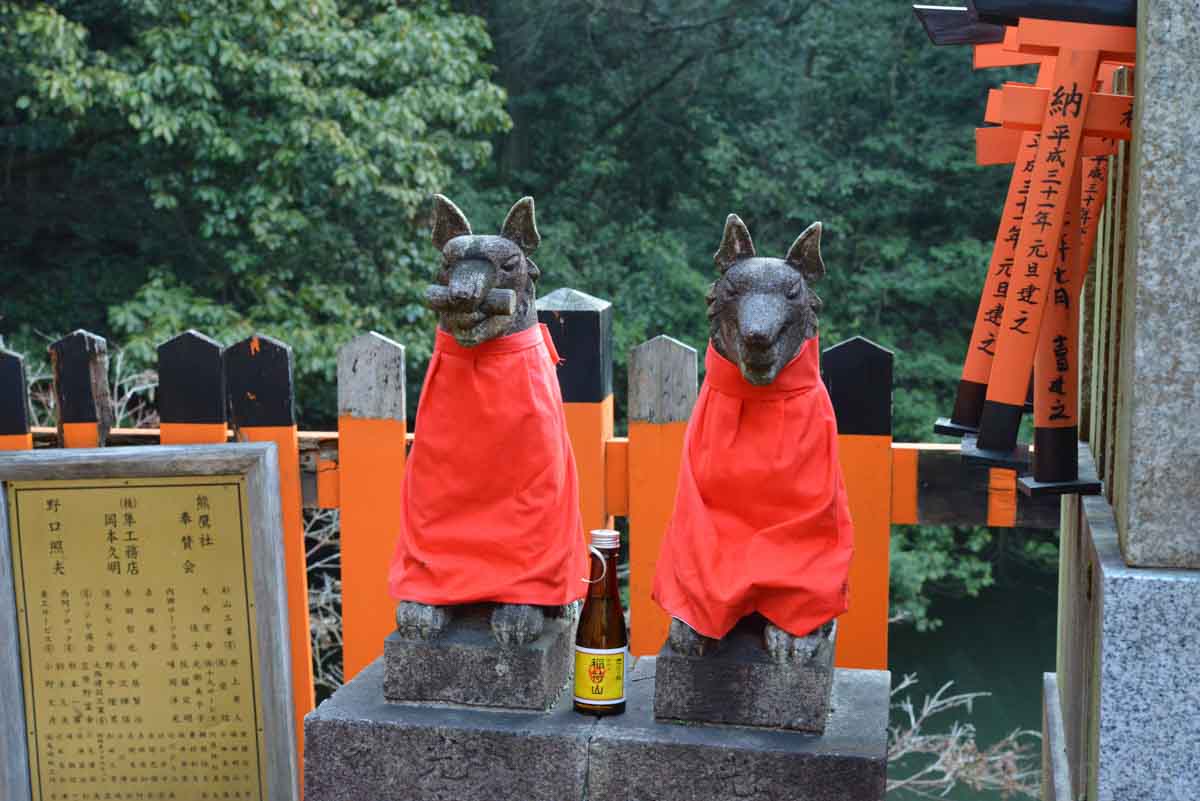
This is “New pond”, also known as Kodama-gaike, is a somewhat mysterious pond that is said to
have a clue to the direction of the return of the spirit by striking a hand toward the pond.
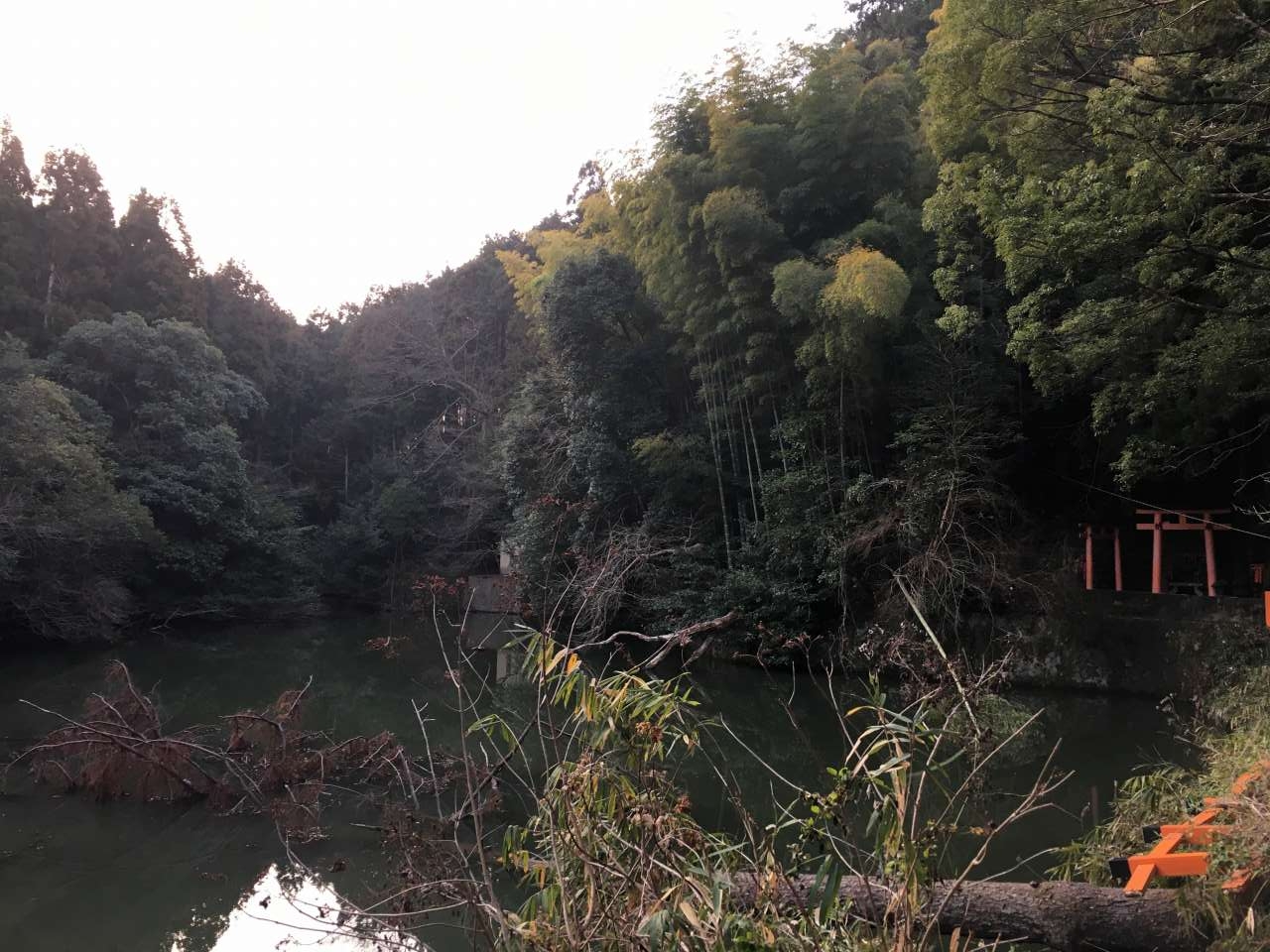
After going up for a while, you will arrive at Yotsuji.
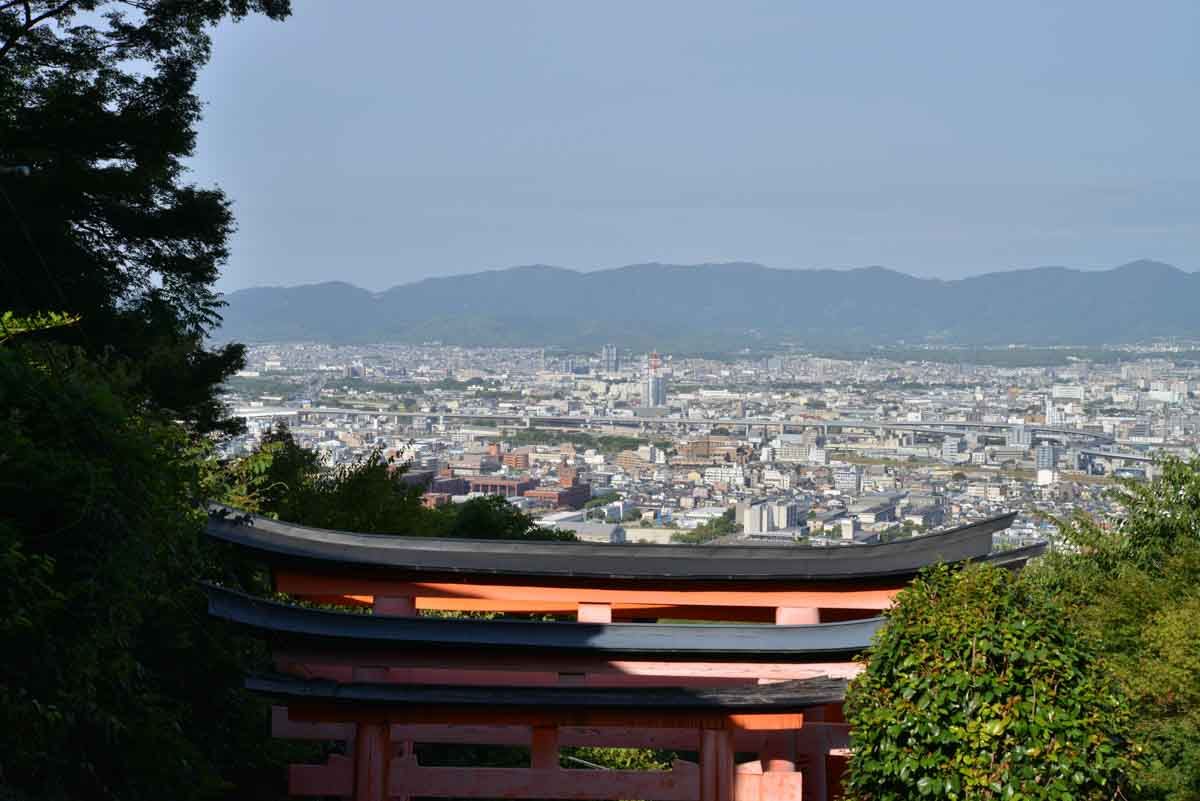
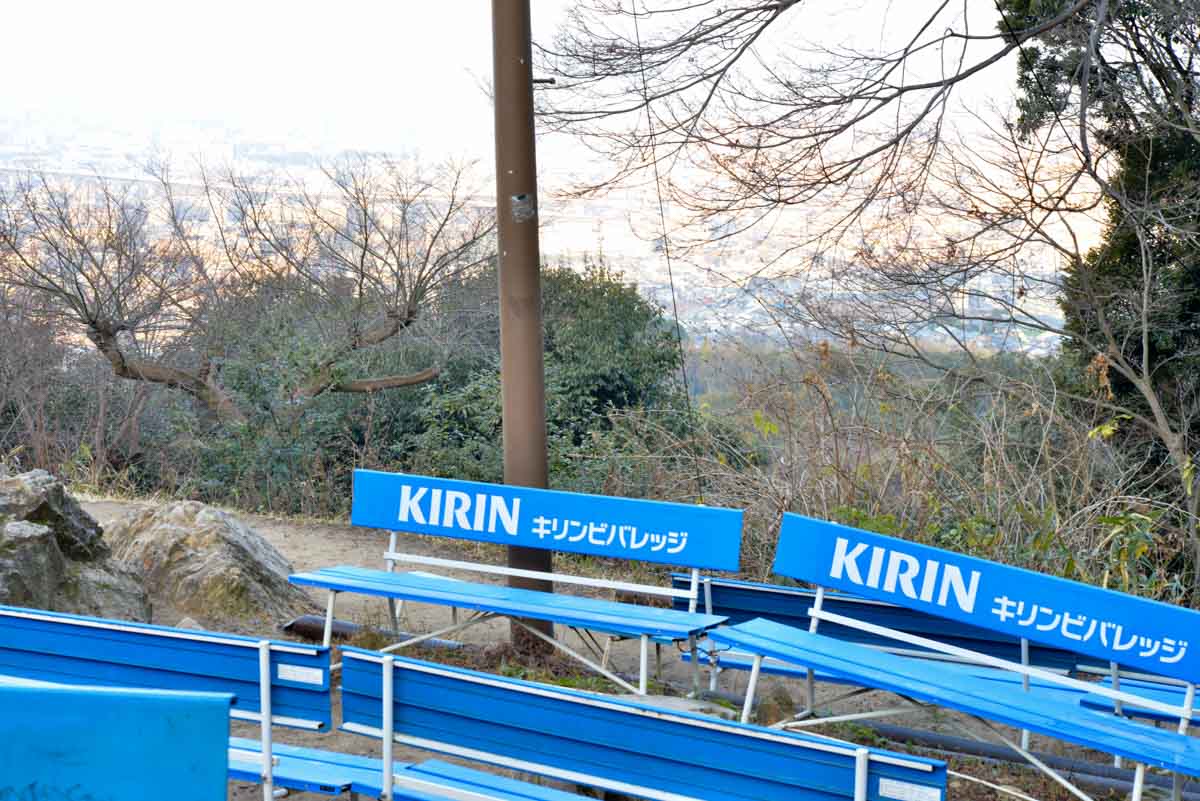
You can see the whole city of Kyoto from Yotsuji. There are benches and shops, so you can take a break here.
Many people make a U-turn at Yotsuji, and if you’re short on time or energy, this is an option for you. By the way,
Nishimura-tei in Yotsuji is the family home of actor Kazuhiko Nishimura.
They serve udon and soba noodles, sweet foods and drinks, etc. I had a drink here when I visited on a hot summer day.
Unfortunately, it was still before business hours as it was early morning.
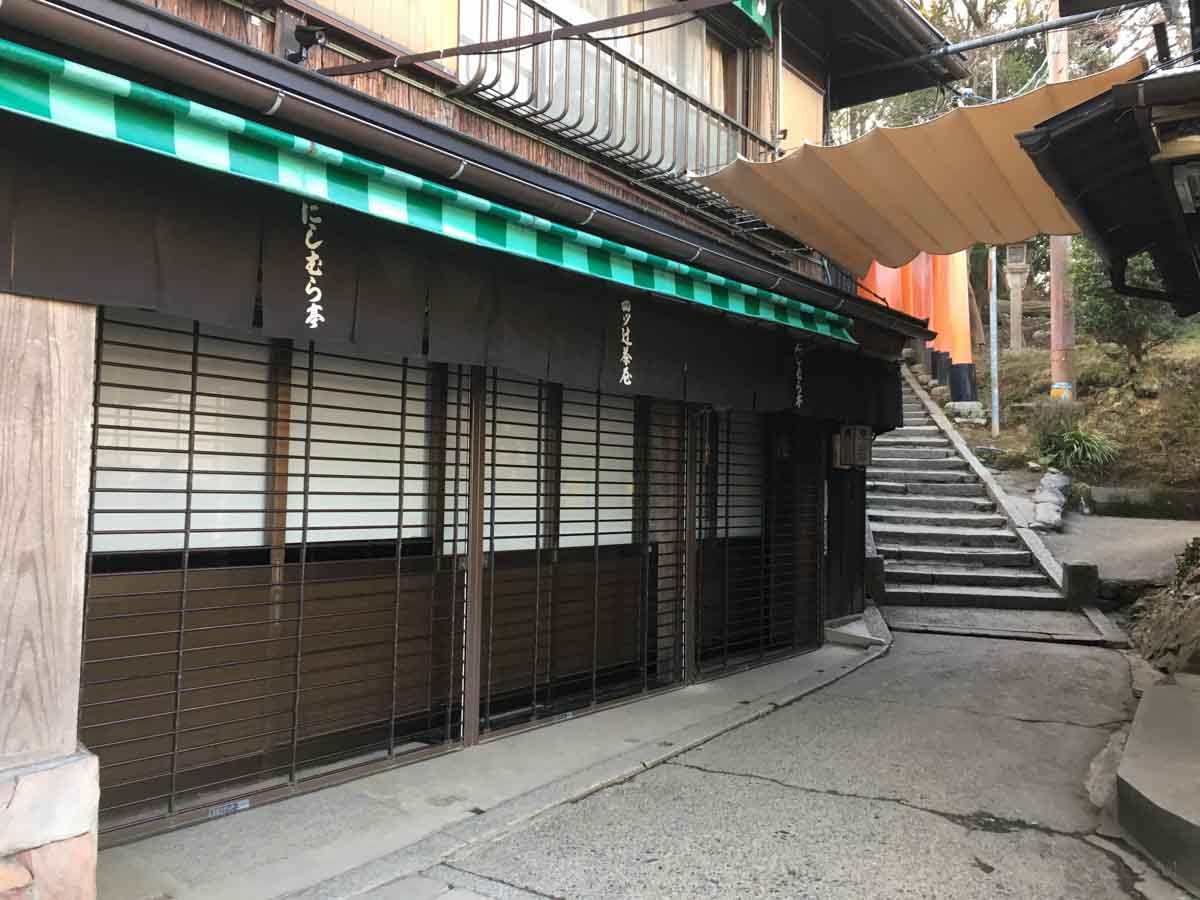
Now, let’s go around! The road is divided into two parts, one is the stairs to the top of the road next to Nishimura-tei.
The other is the downhill route. Whichever route you take, you will come back to Yotsuji.
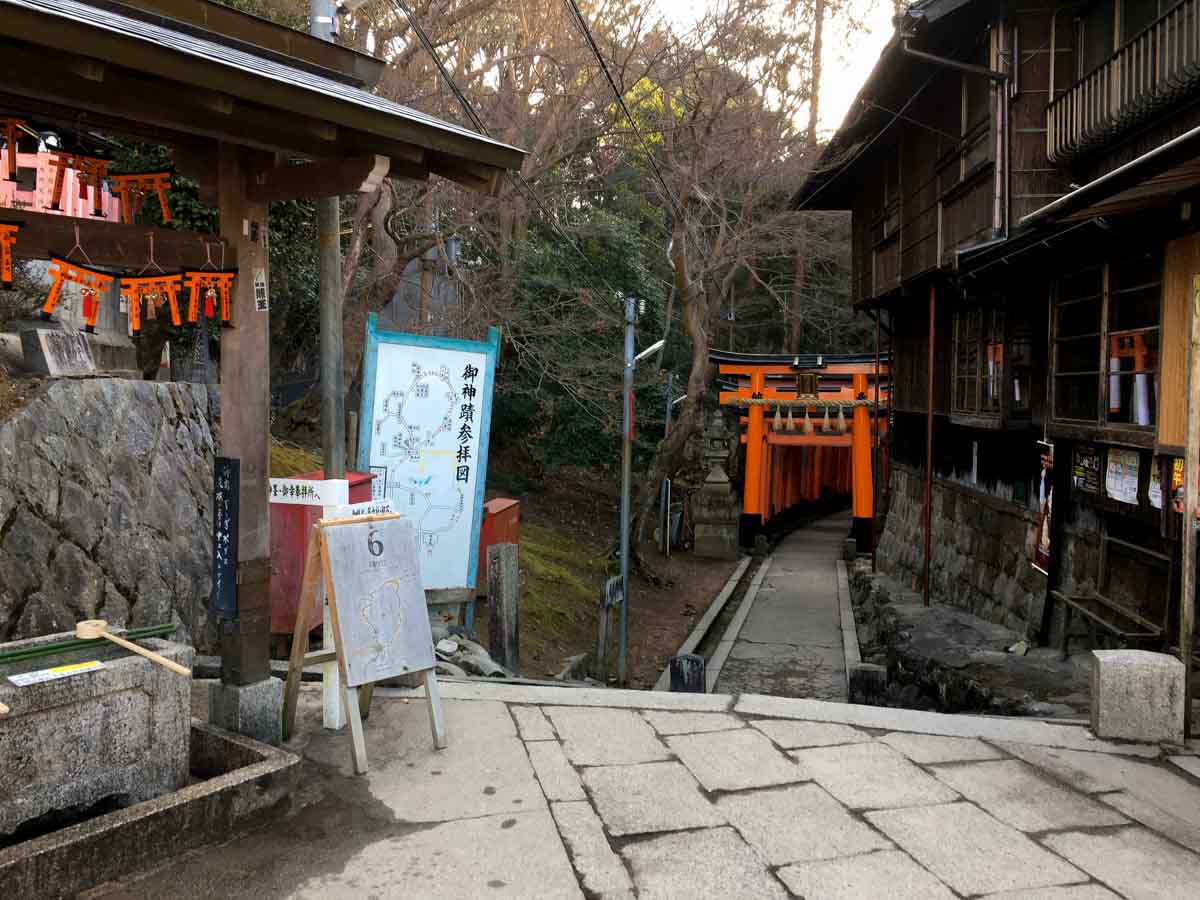
So let’s go clockwise this time from the downhill road! A little further down the road is the “Ganrikisha”.
It is said that many business people, business managers, and marketeers visit here because
they are told that “eye diseases are improved” and “foresight and powers of sight are granted”.
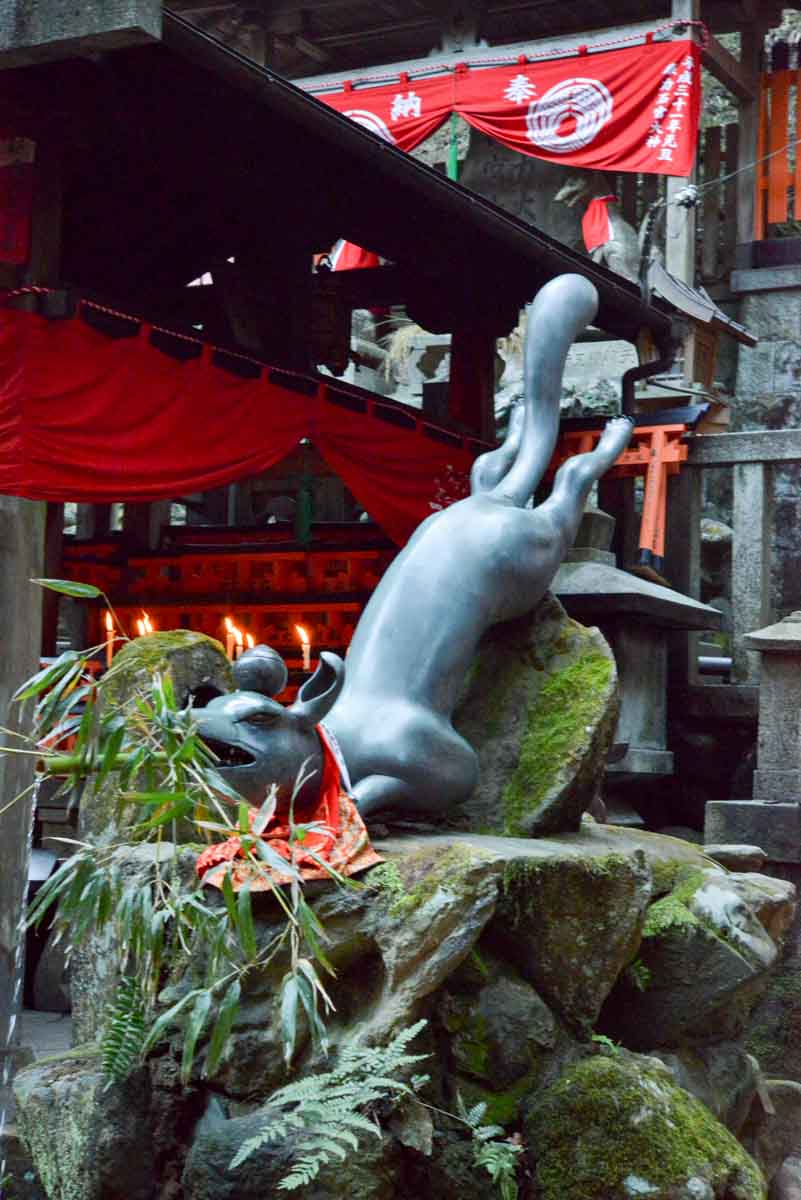
Mt.Inari, there are many similar torii paths and forked paths, so you may feel a little lost. Sometimes foreigners ask us which way is the top of the mountain?
I think this staircase is the only difficult part of the clockwise route. It’s quite hard to go up the stairs.
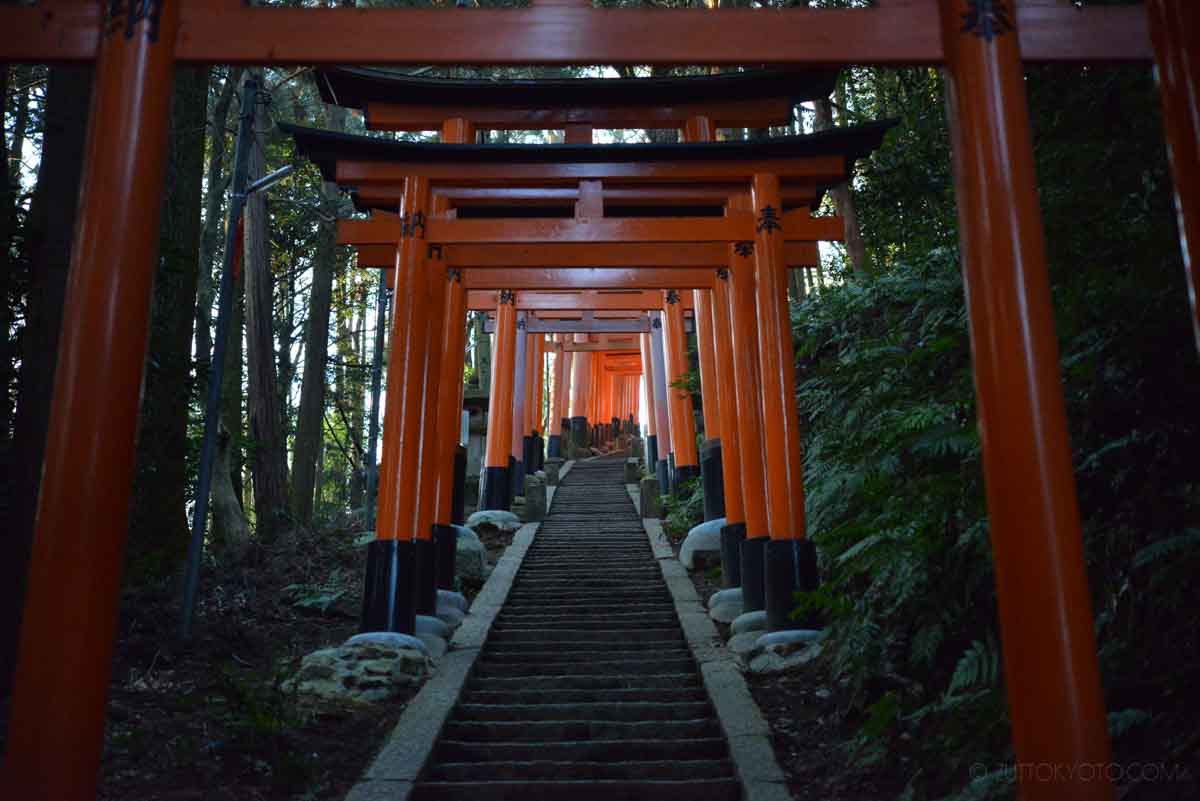
Early in the morning, you can even see the sunrise between the trees around here!
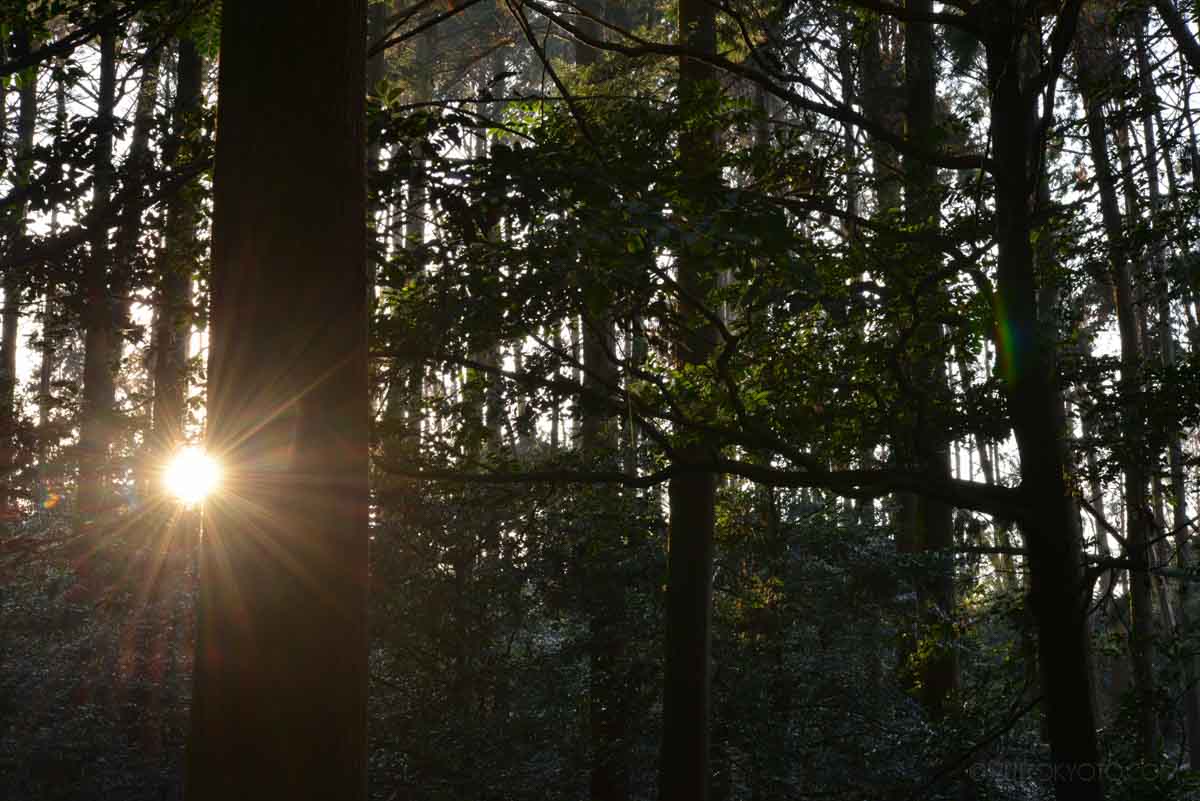
Arrived at the summit of Ichinomine!
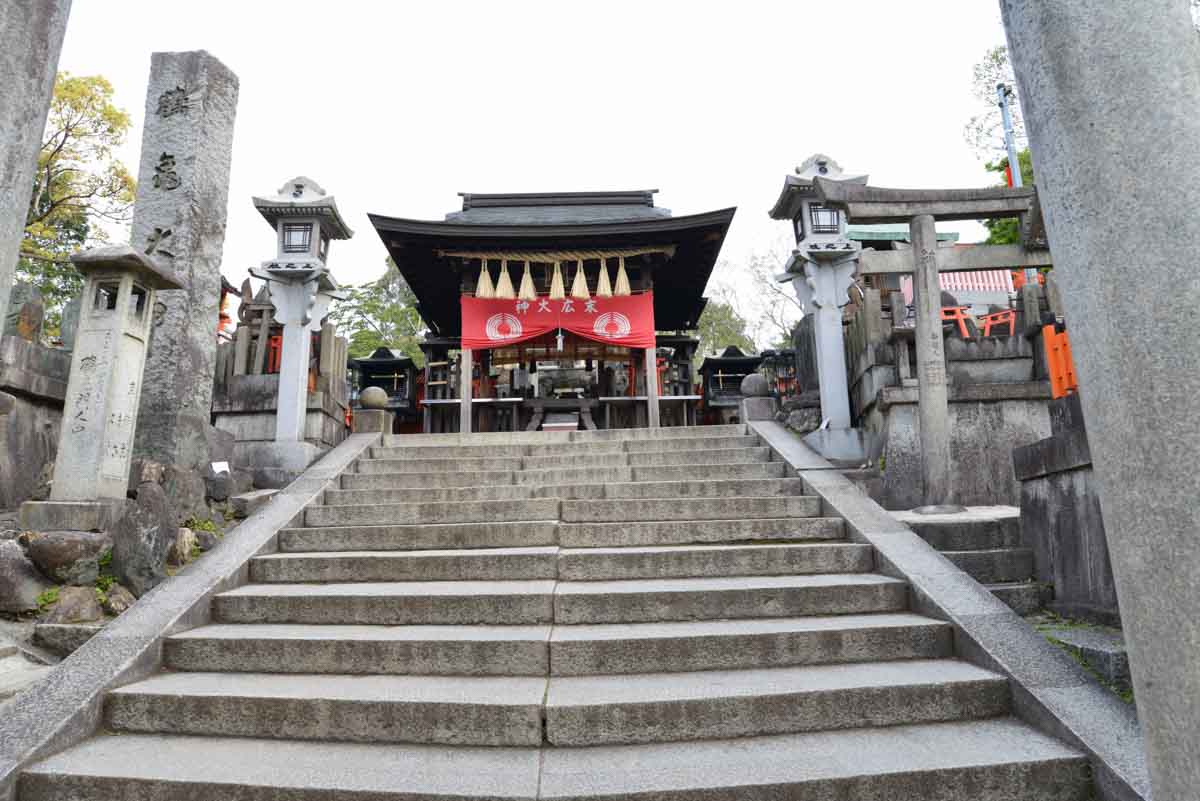
It’s the summit, but I was imagining it to be an open area with a great view? What I thought,
but since Mt.Inari is a sacred place, it was different from the ordinary summit.
Now, let’s go to the Yotsuji area.
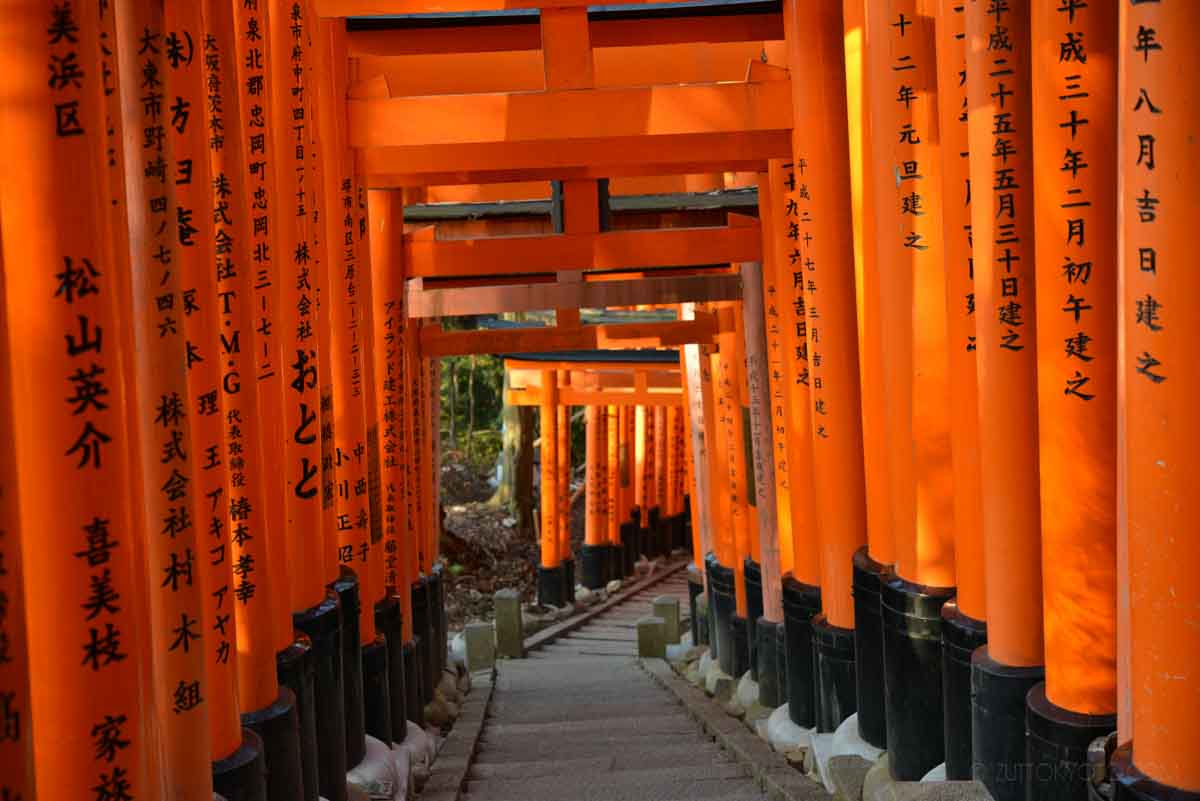
Now I’m going to walk around looking at the back of the torii. There might be some company names you know.
After returning to Yotsuji, we’ll return from the opposite direction as we came.
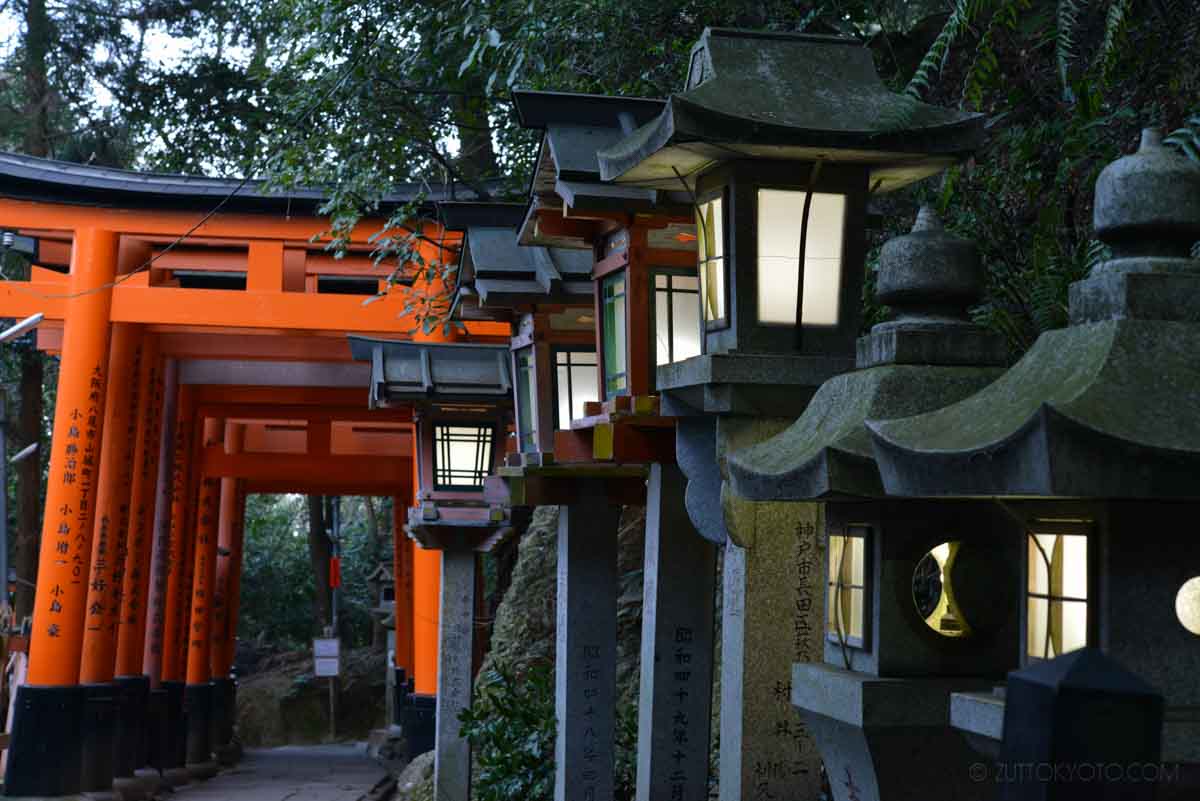
Oh! Monkeys! I was with a baby monkey. It looks like a wild monkey.
There was also a sign that warned me about the monkeys.

On the way there was a shrine called “Koshigami Fudo Shrine”.
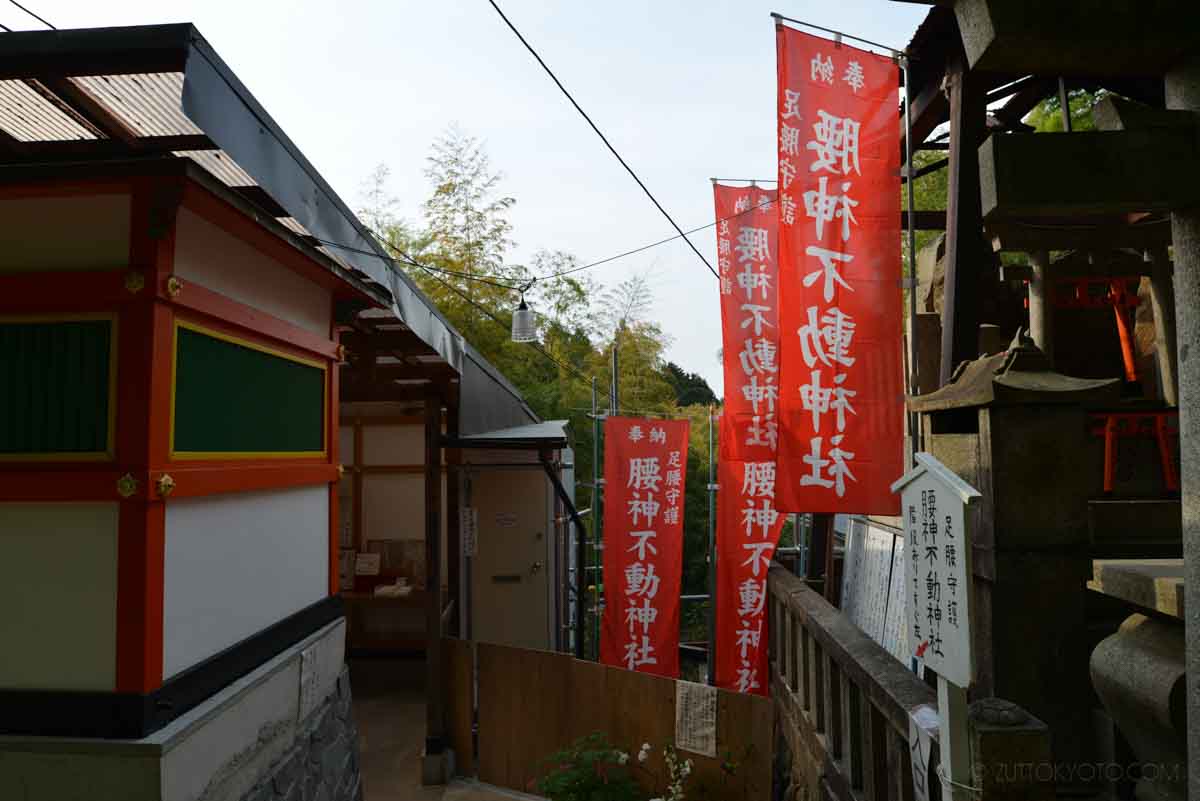
This shrine is dedicated to the god of feet and legs. I visited the shrine because I like to walk.
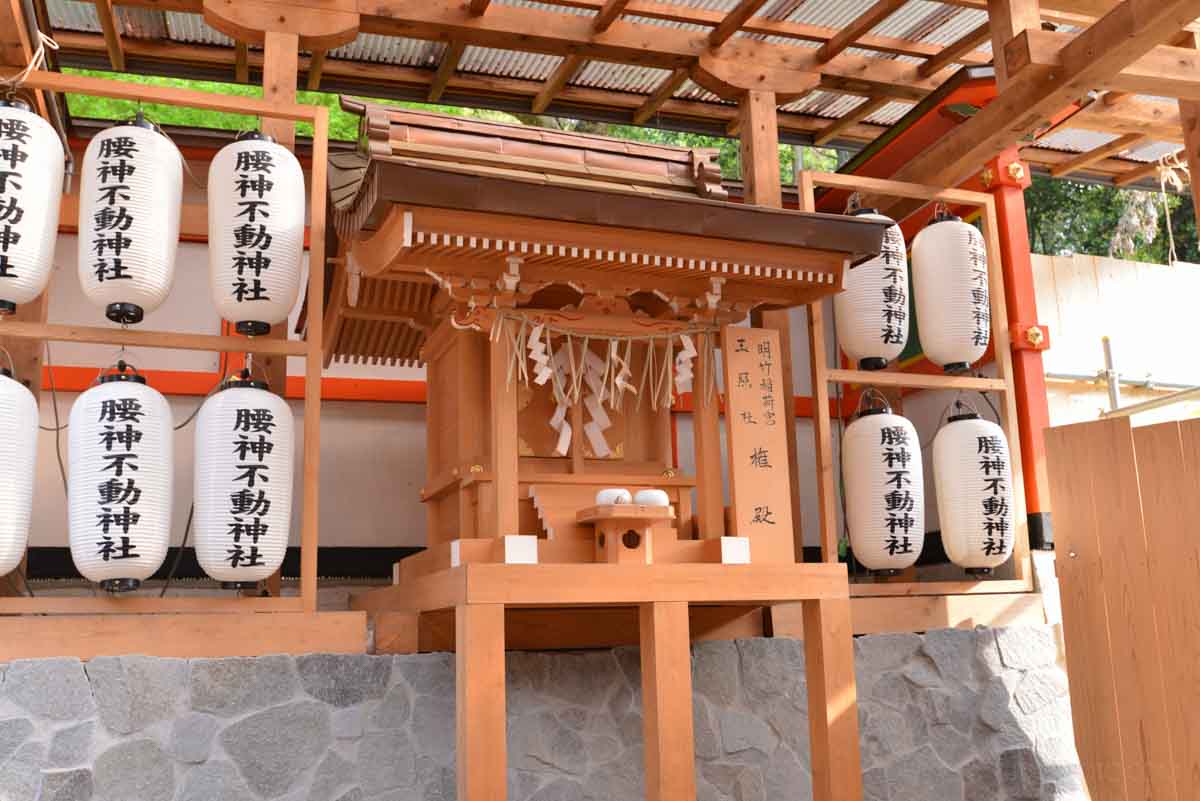
I will return from the back approach. “Urasando” is a busy and fun street with lots of street stalls and restaurants.
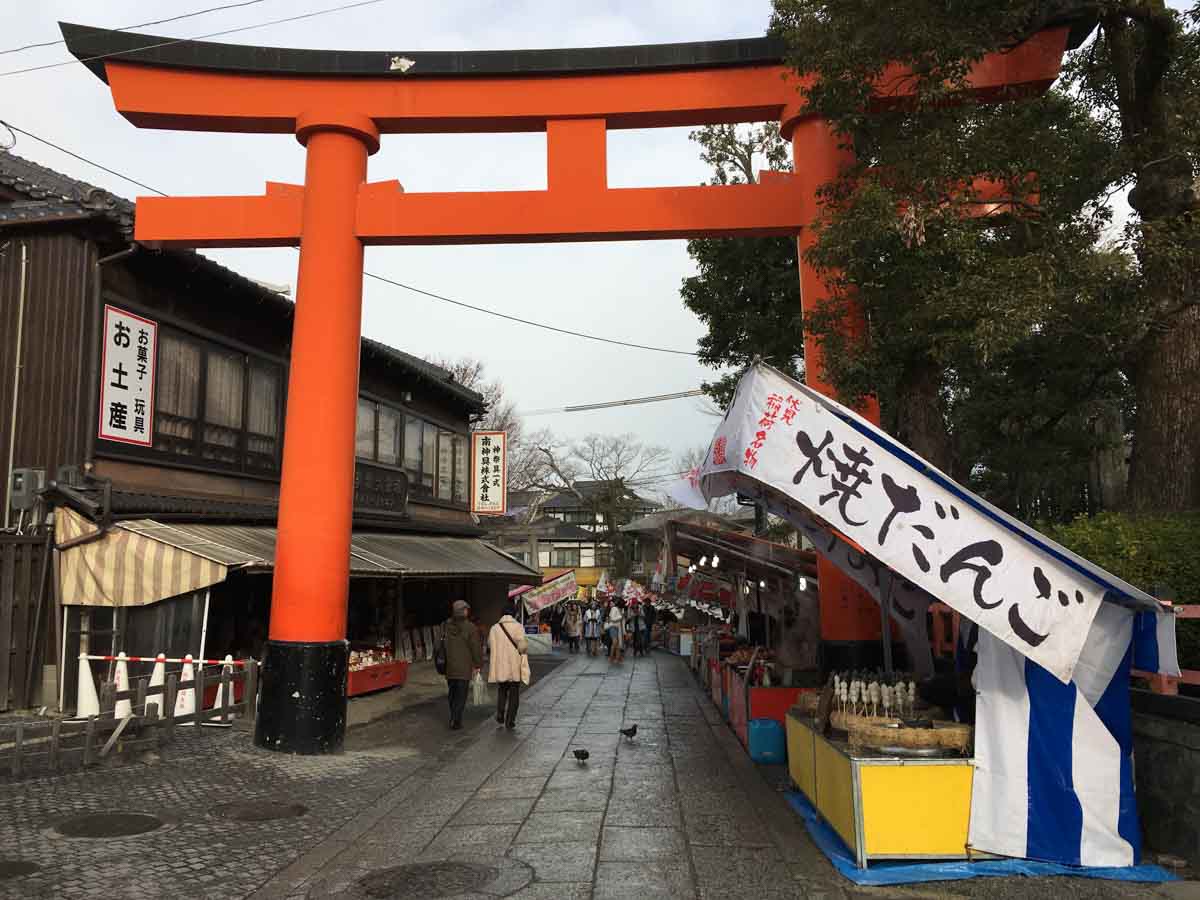
There are food stalls and a shop along the back approach that serves Fushimi Inari’s famous roasted sparrows!
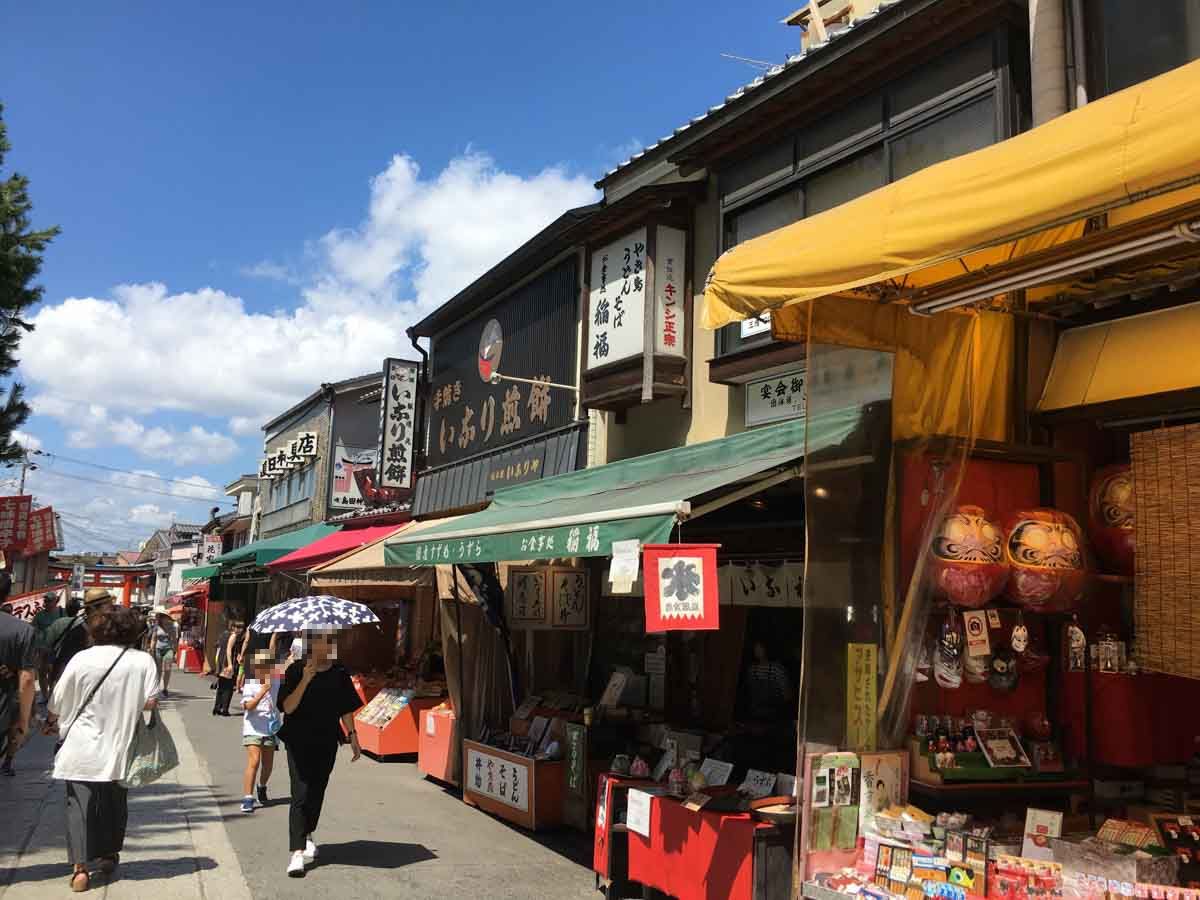
By the way, I have an image that Kyoto is Japanese food, but unexpectedly, the consumption of bread and coffee is the largest in Japan.
There are delicious looking bakeries everywhere.
There is a bakery in the back approach of Fushimi Inari, so I sometimes bought it when I visited. The name of this shop is Renard.

Even though all the items are only 100 yen, each one was carefully made and delicious.
They are open from 7:30 a.m. and close when they are sold out.
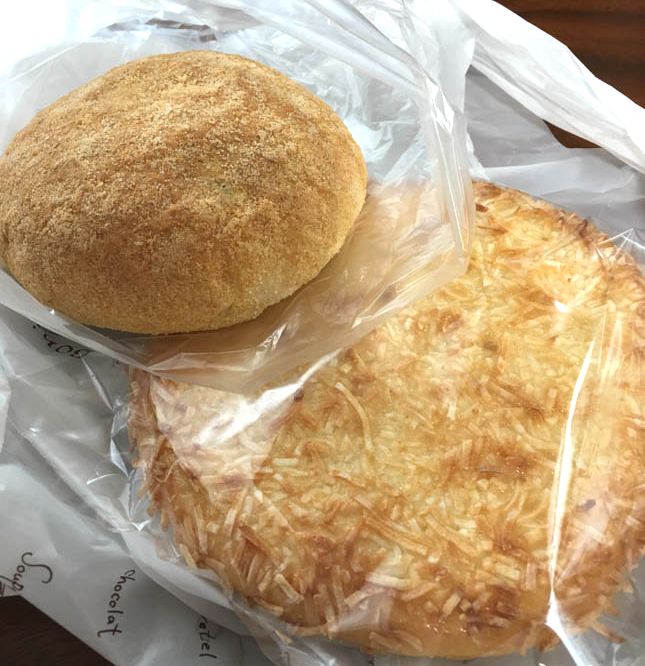
By the way, is it correct that Fushimi Inari Taisha Shrine and Oyama Meguri were built?
If you are going to a mountain tour, please drink enough water to prevent heat stroke.
Also, depending on the time zone, the torii gate is very crowded and the traffic is very heavy.
Please be aware that the time required varies greatly if you include the amount of traffic, worship time, and break time.
Then, I will summarize Fushimi Inari Taisha and Oyama Meguri.
Q: What time do you recommend to go?
A:For those who want to go around the mountains,
I recommend the one that is available from 7 AM to 8 o’clock. (After 8 o’clock, the number of people gradually increases.)
Q: What do you want to know?
A:Please walk both Omotesando and Urasando. Omotesando has a sacred atmosphere,
Urasando has a lively atmosphere with open-air baths and shops, and you can enjoy the two atmosphere of Fushimi Inari Shrine.
Q: What do you recommend?
A:It is Omokaru stone. Everyone, please try it!
